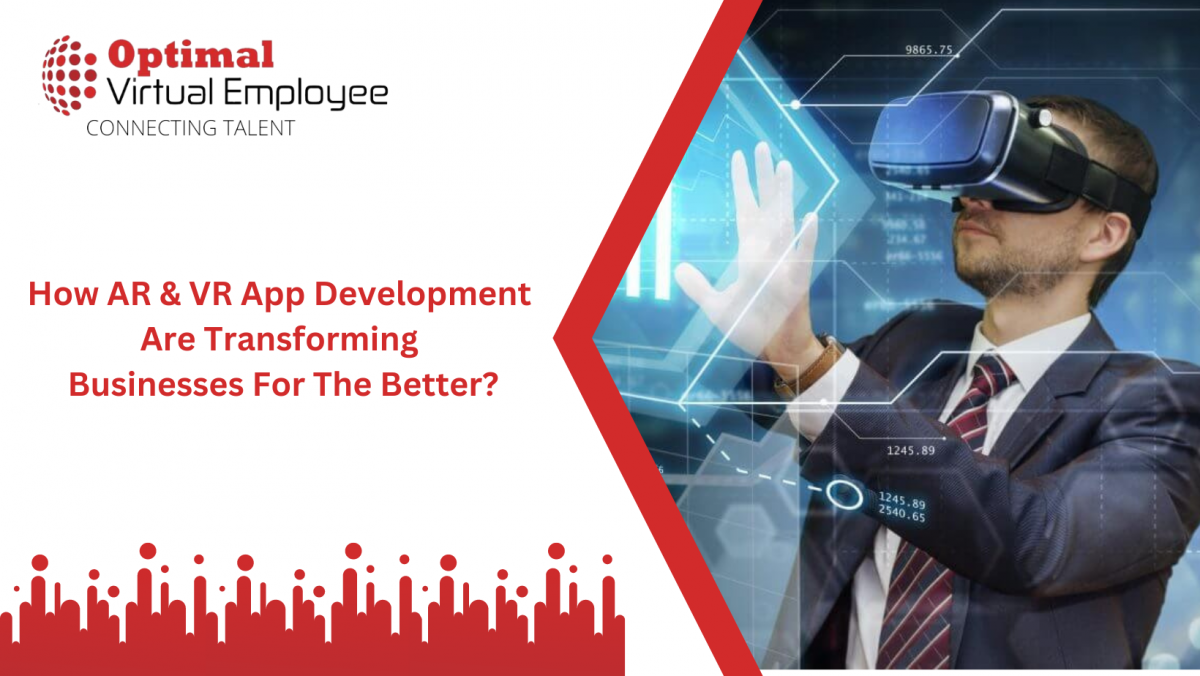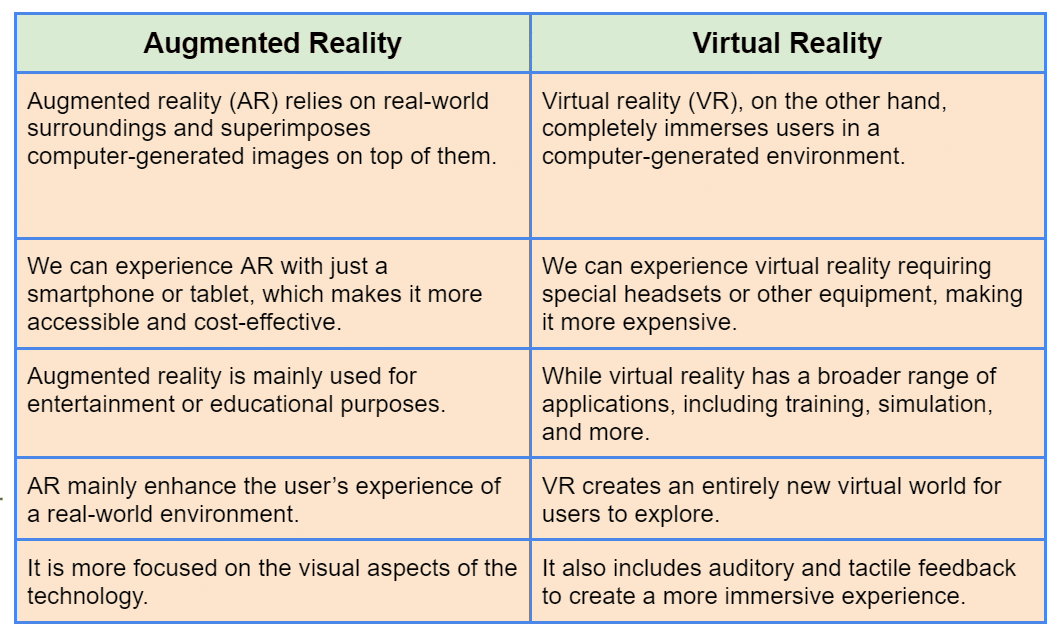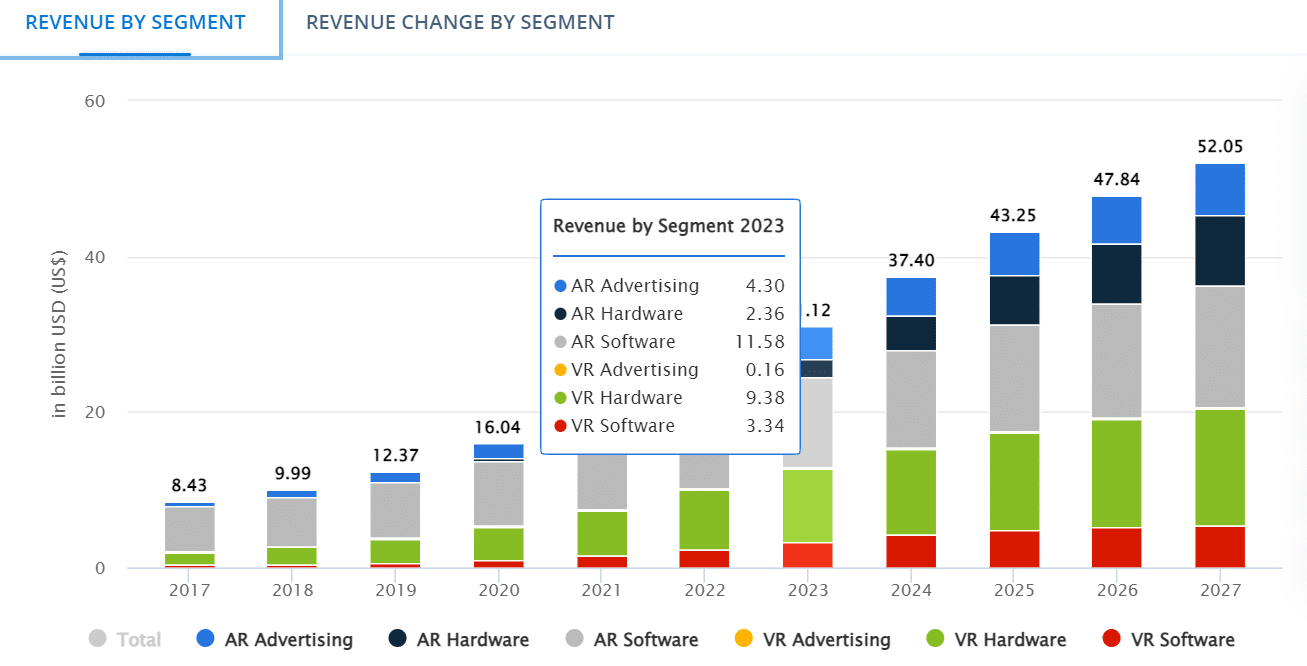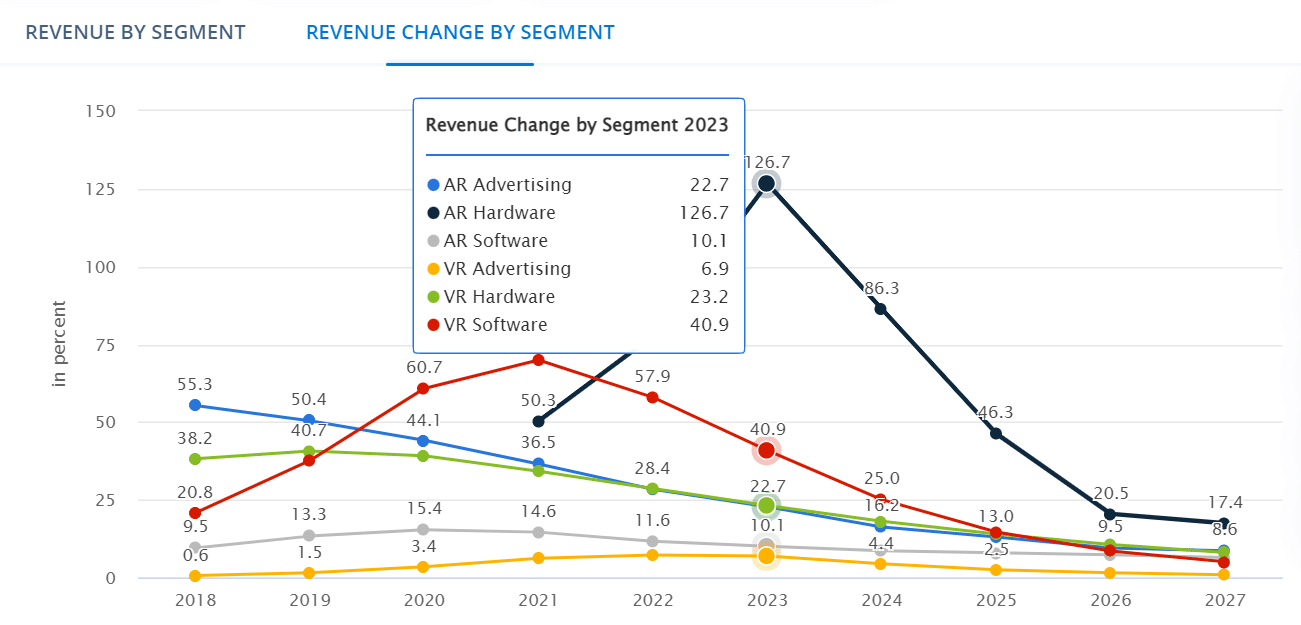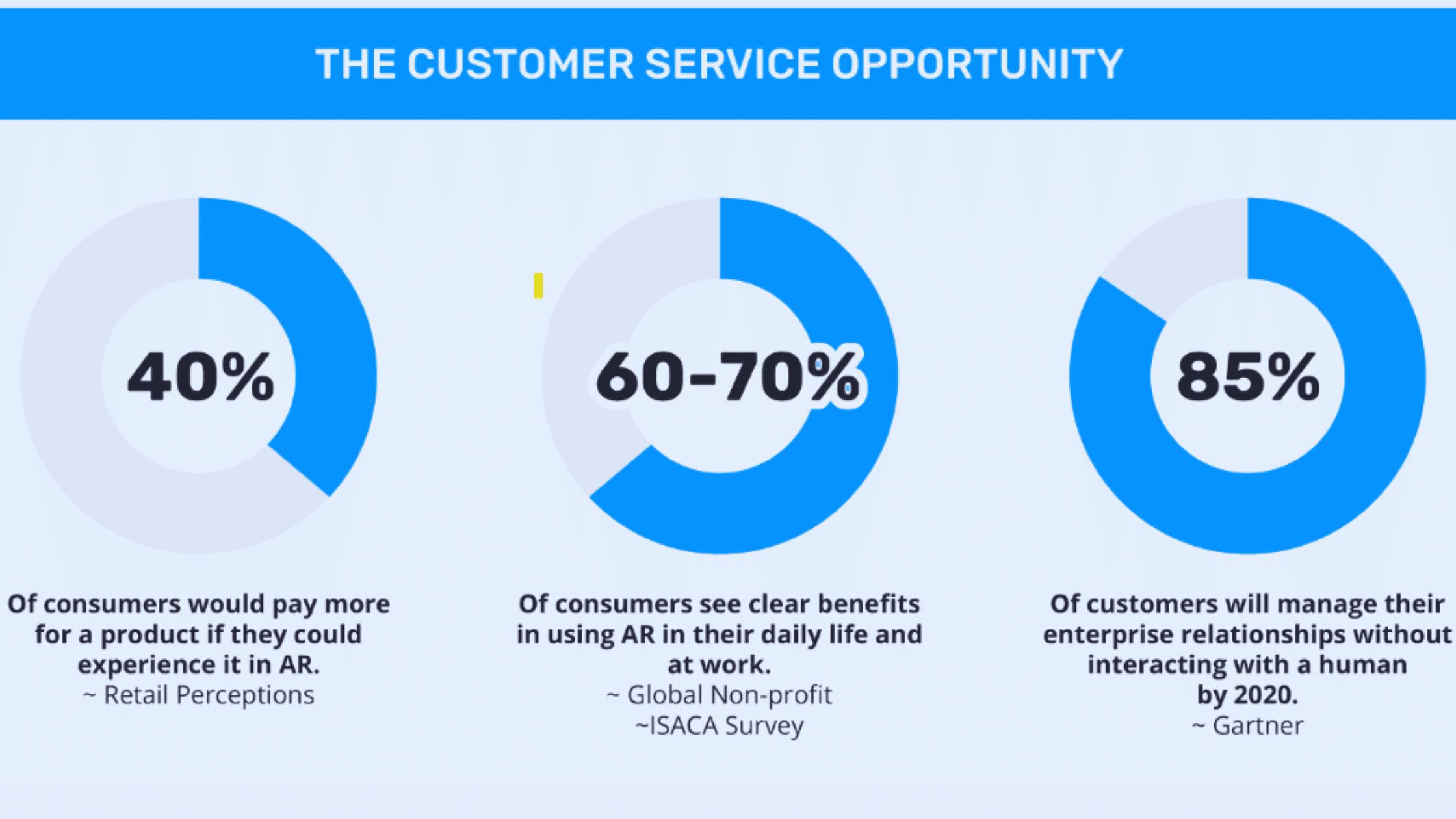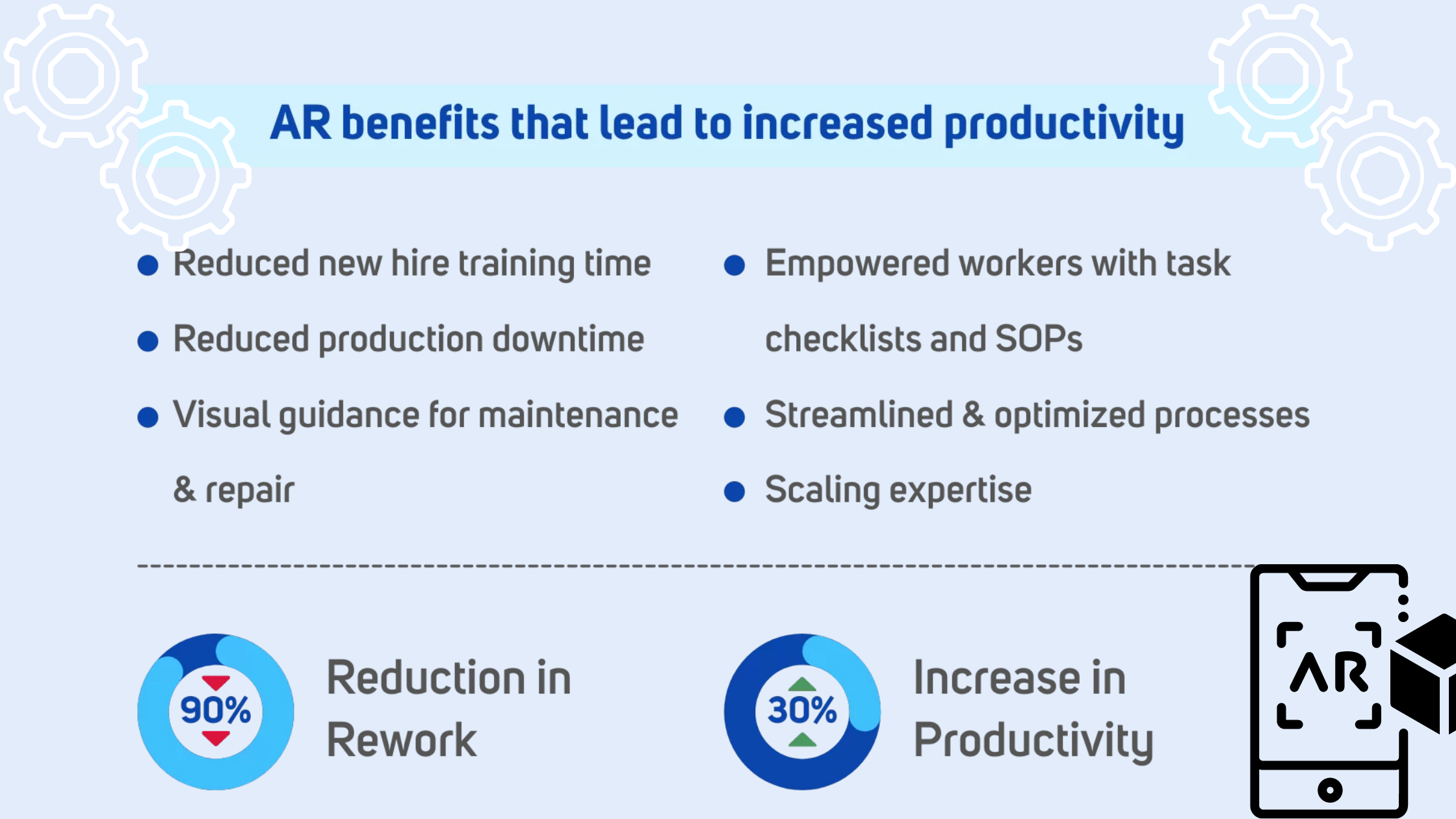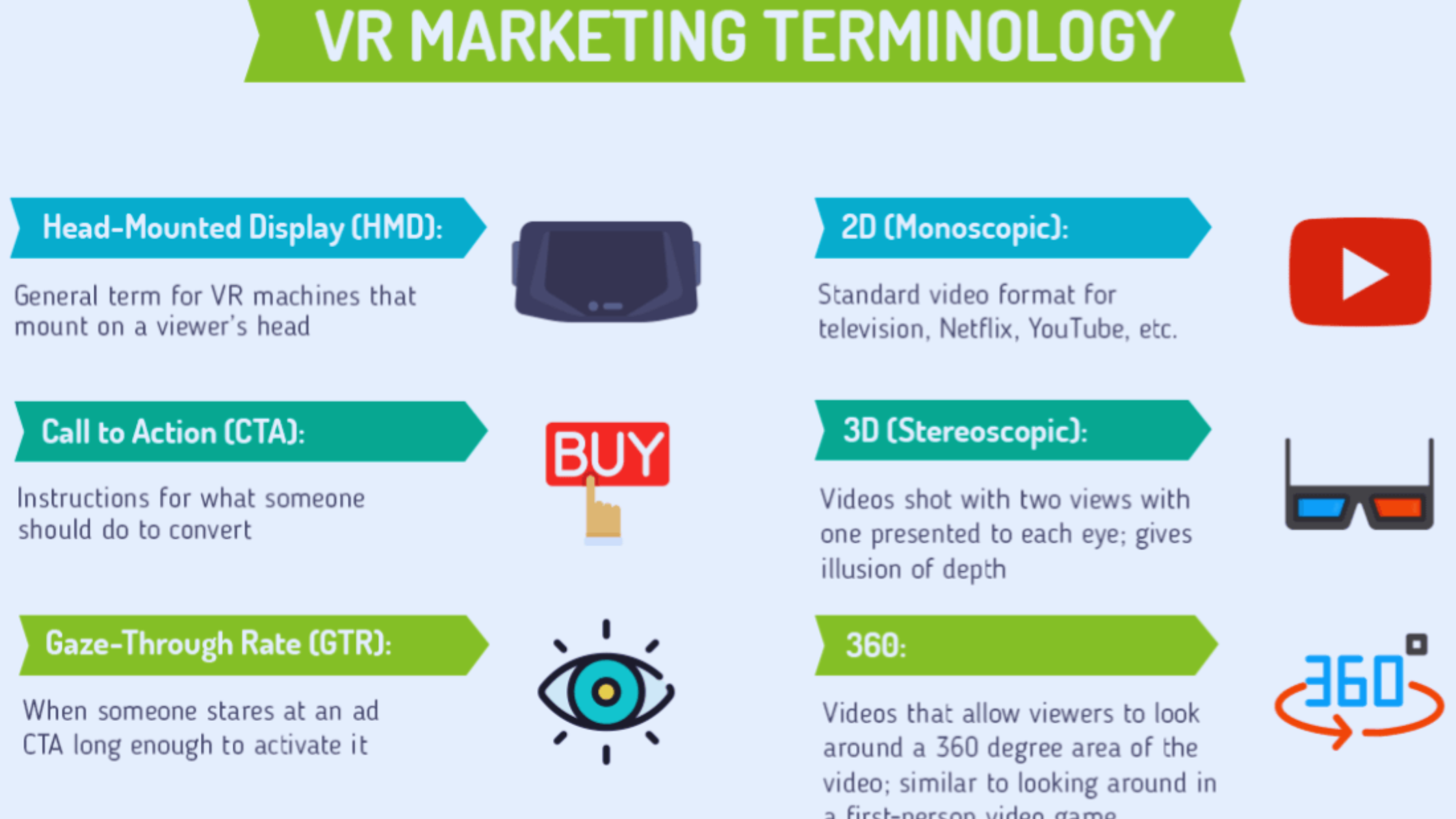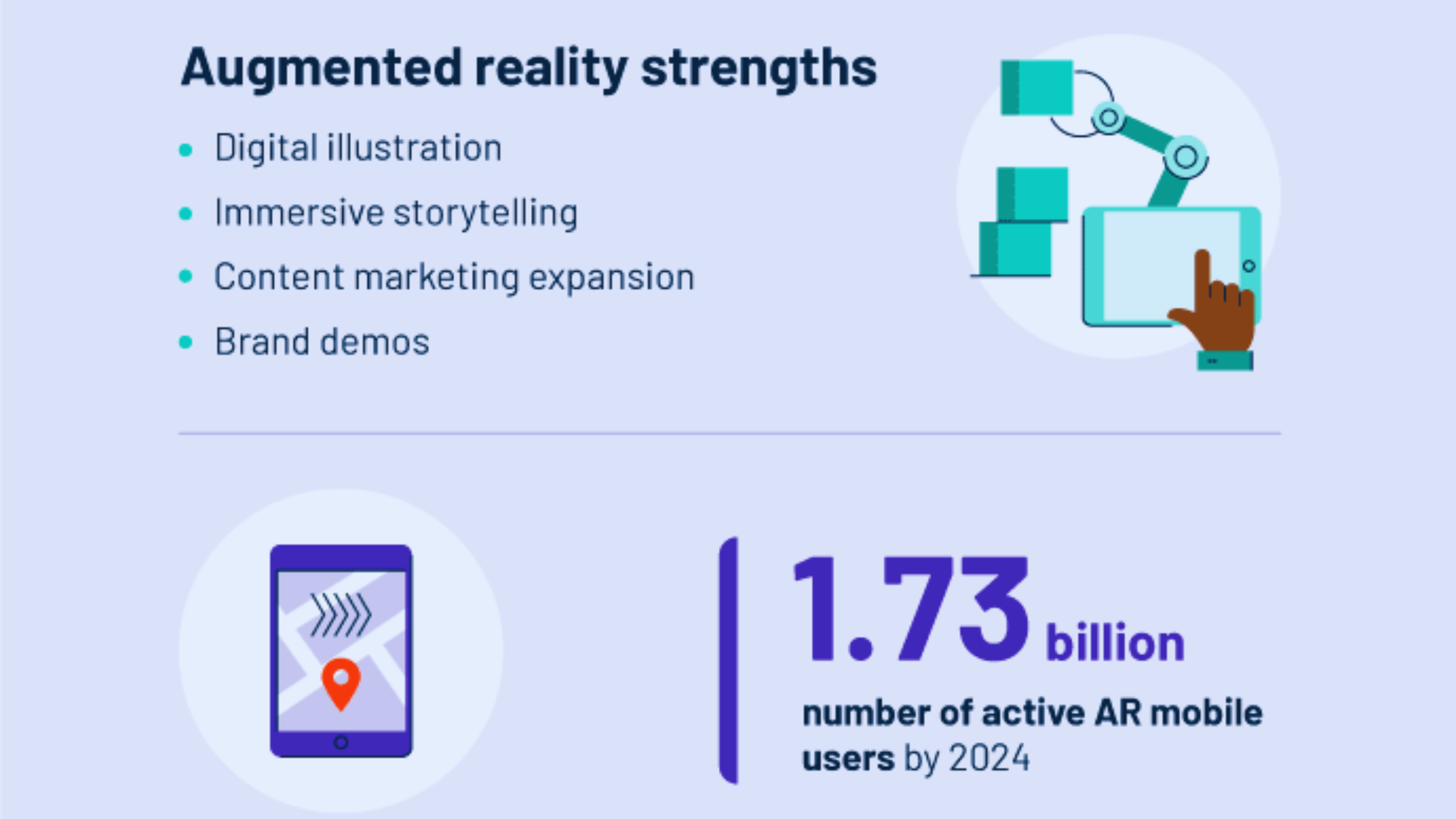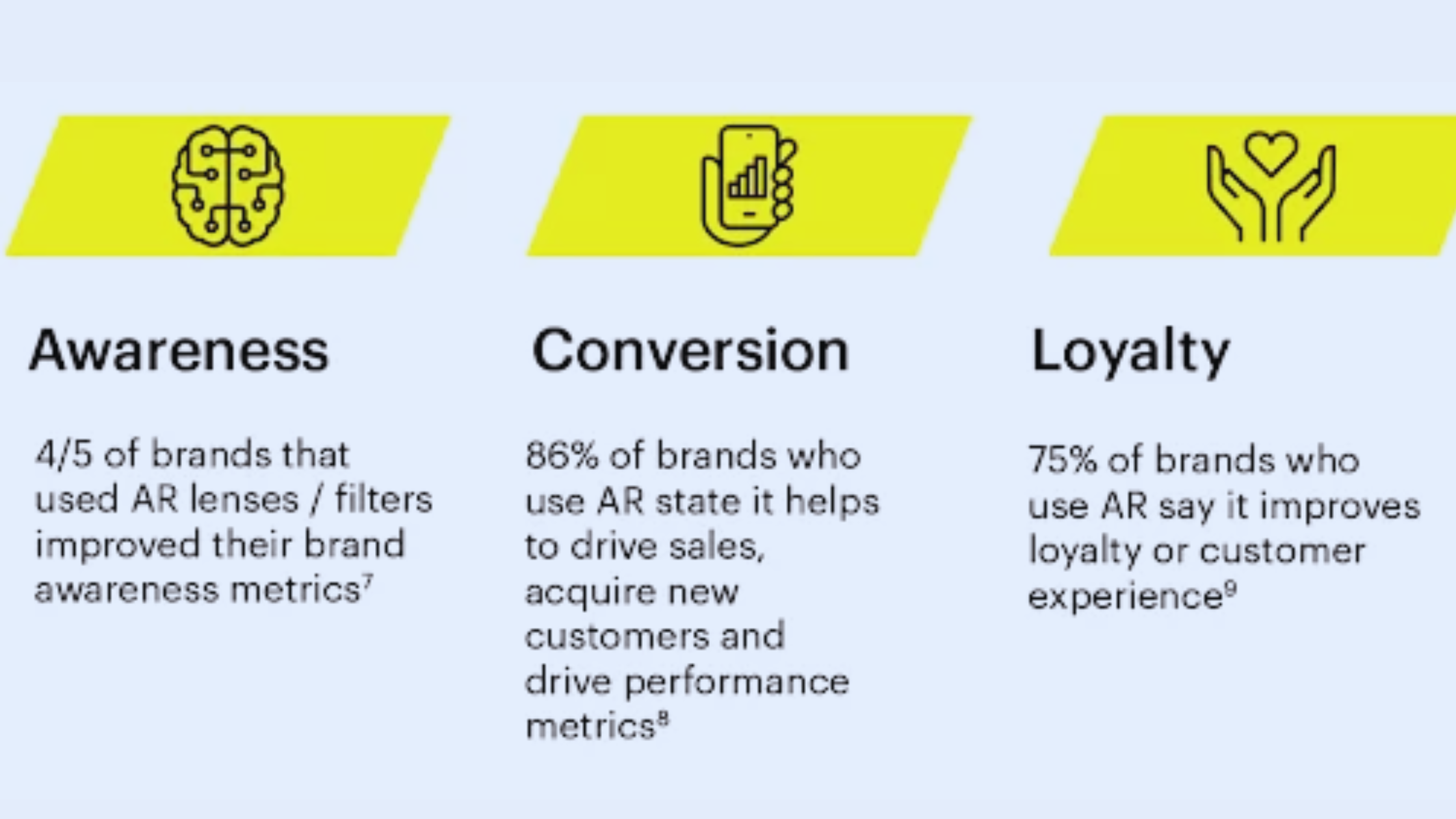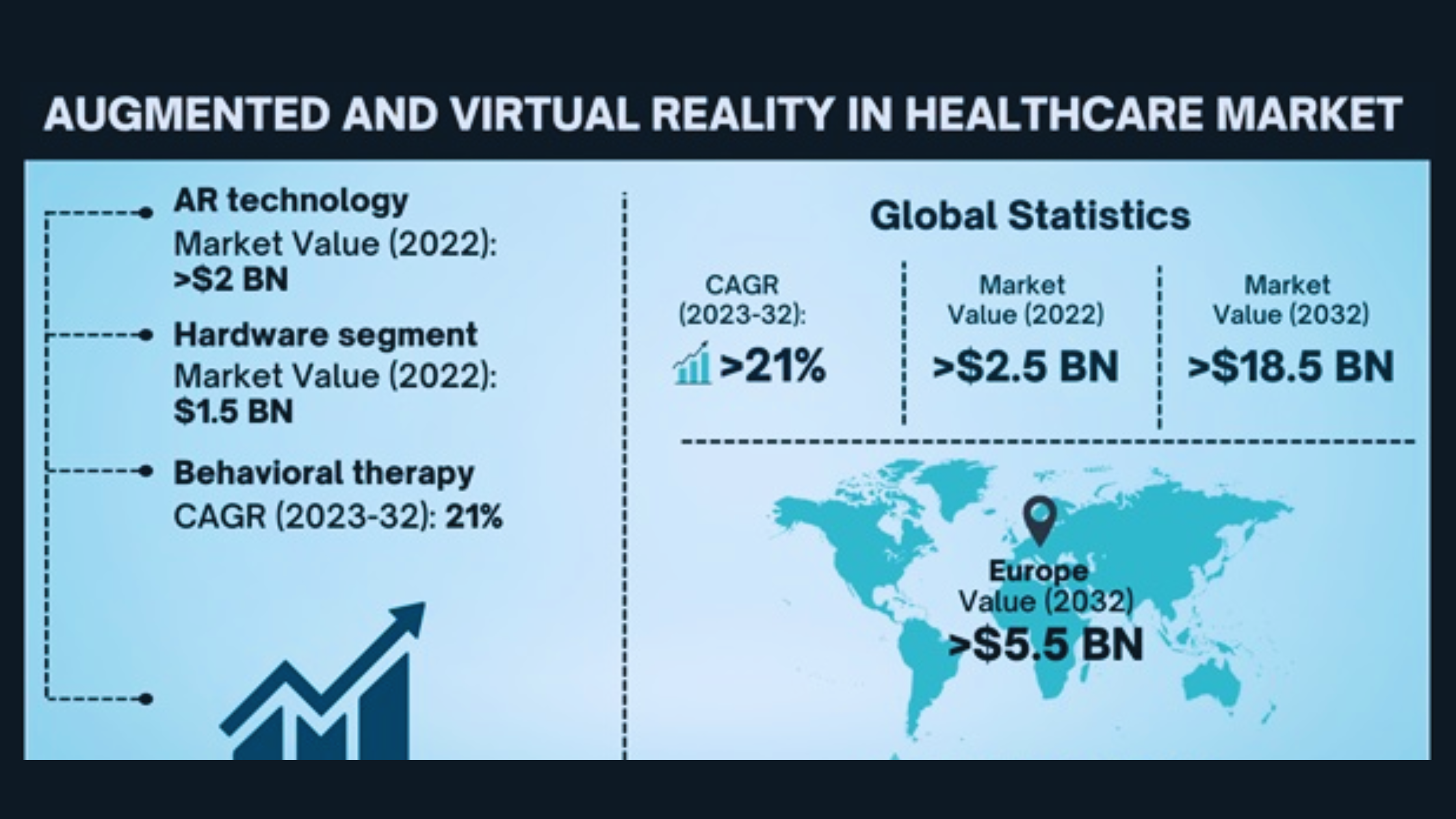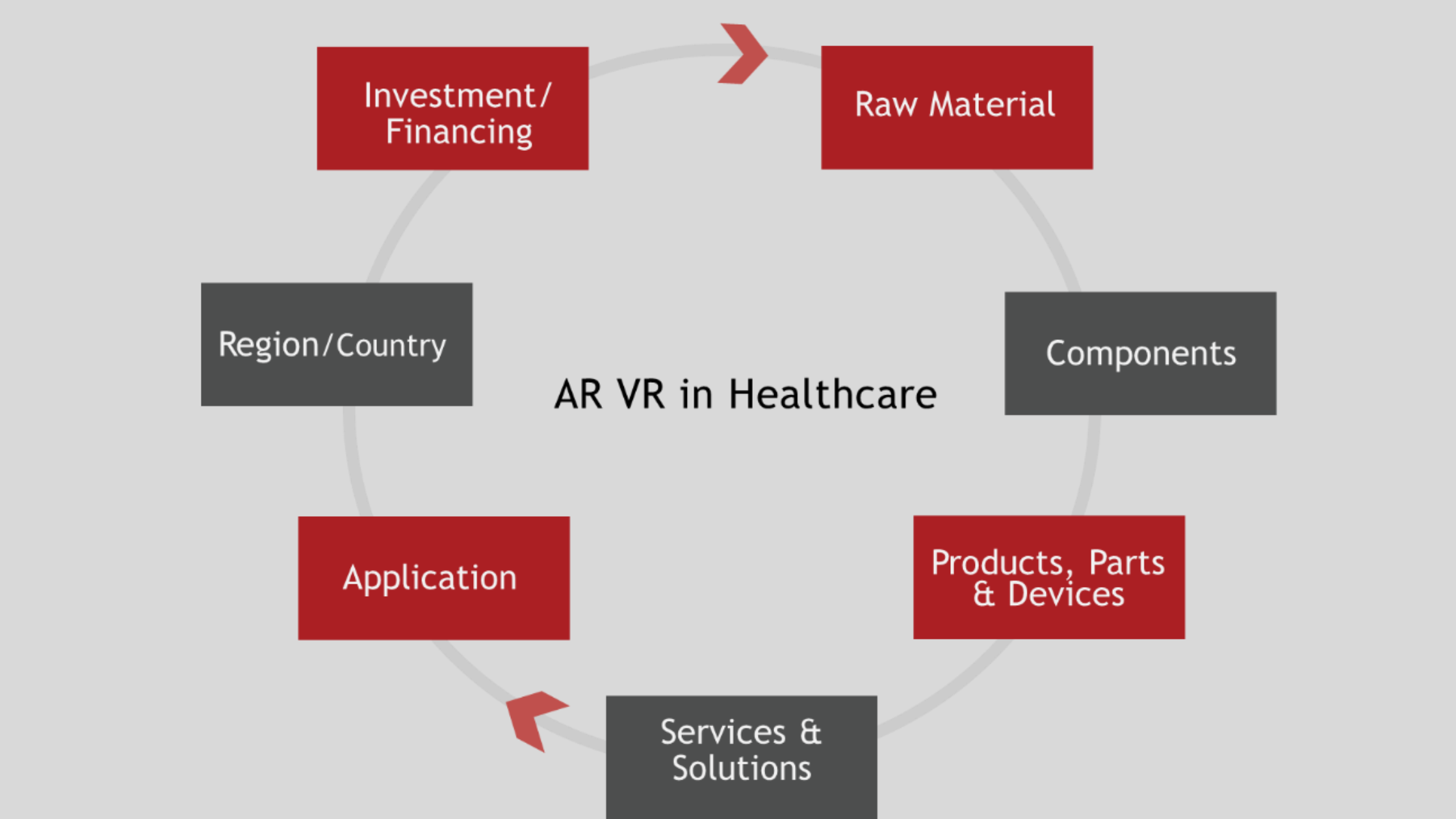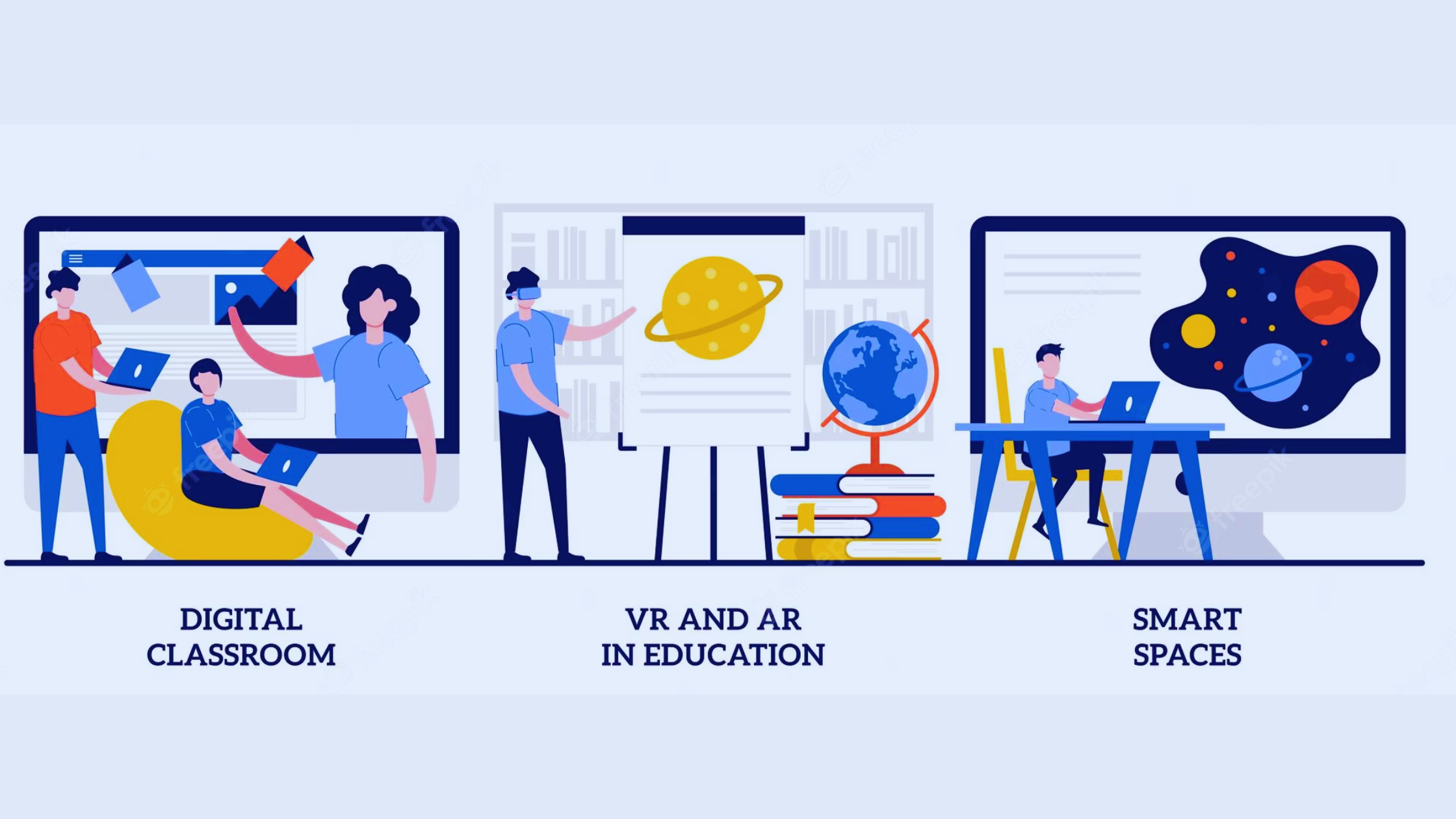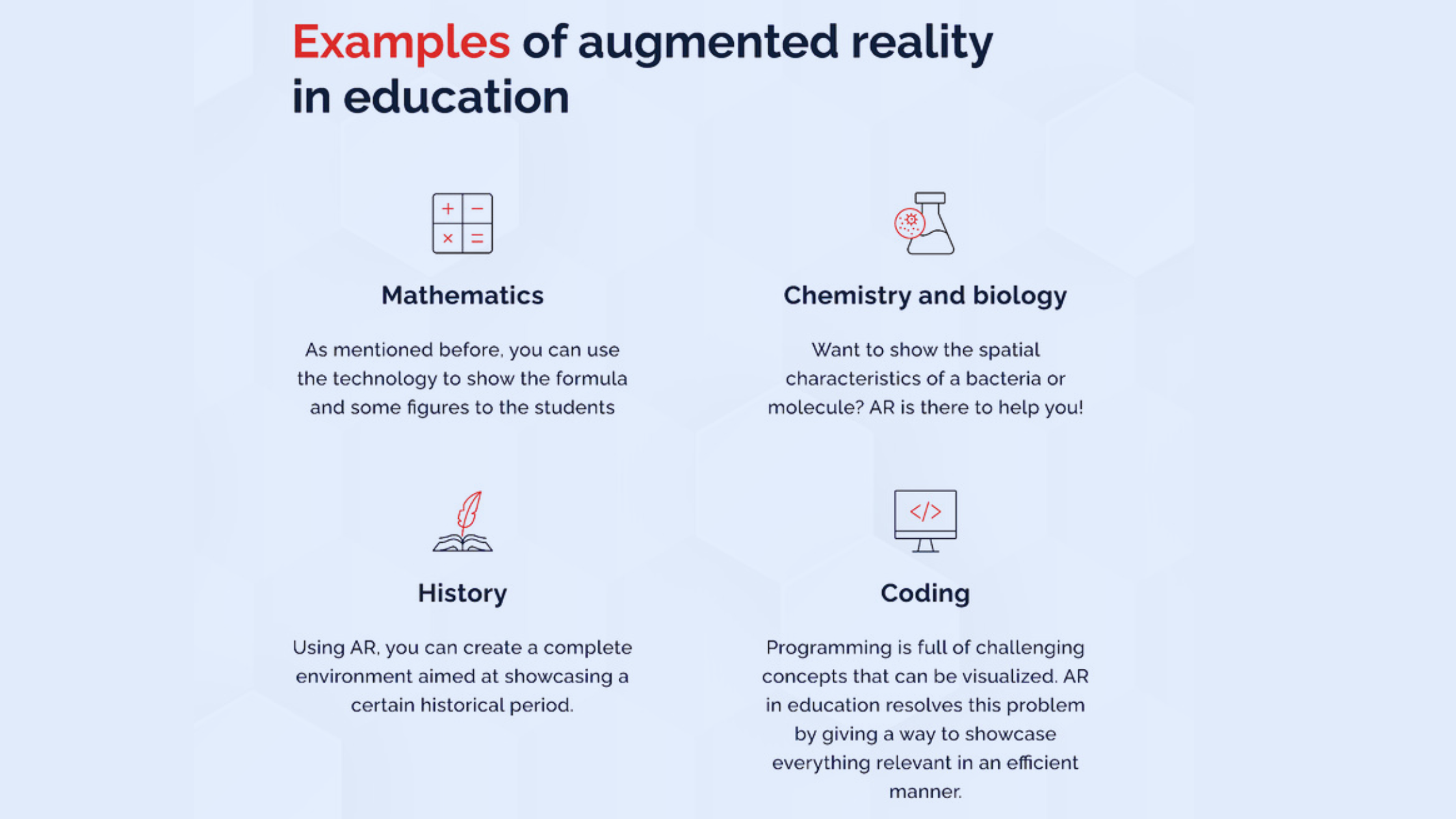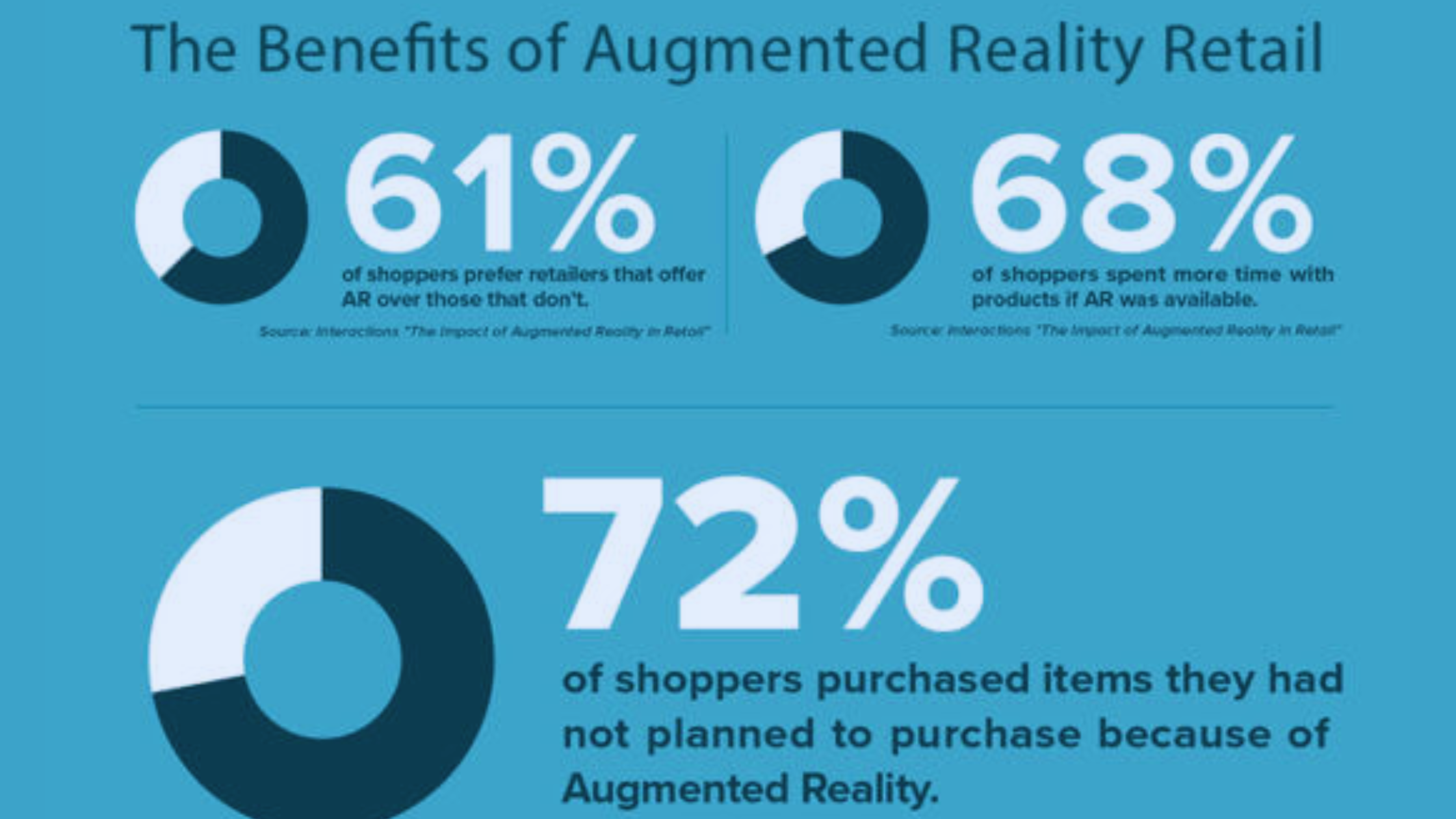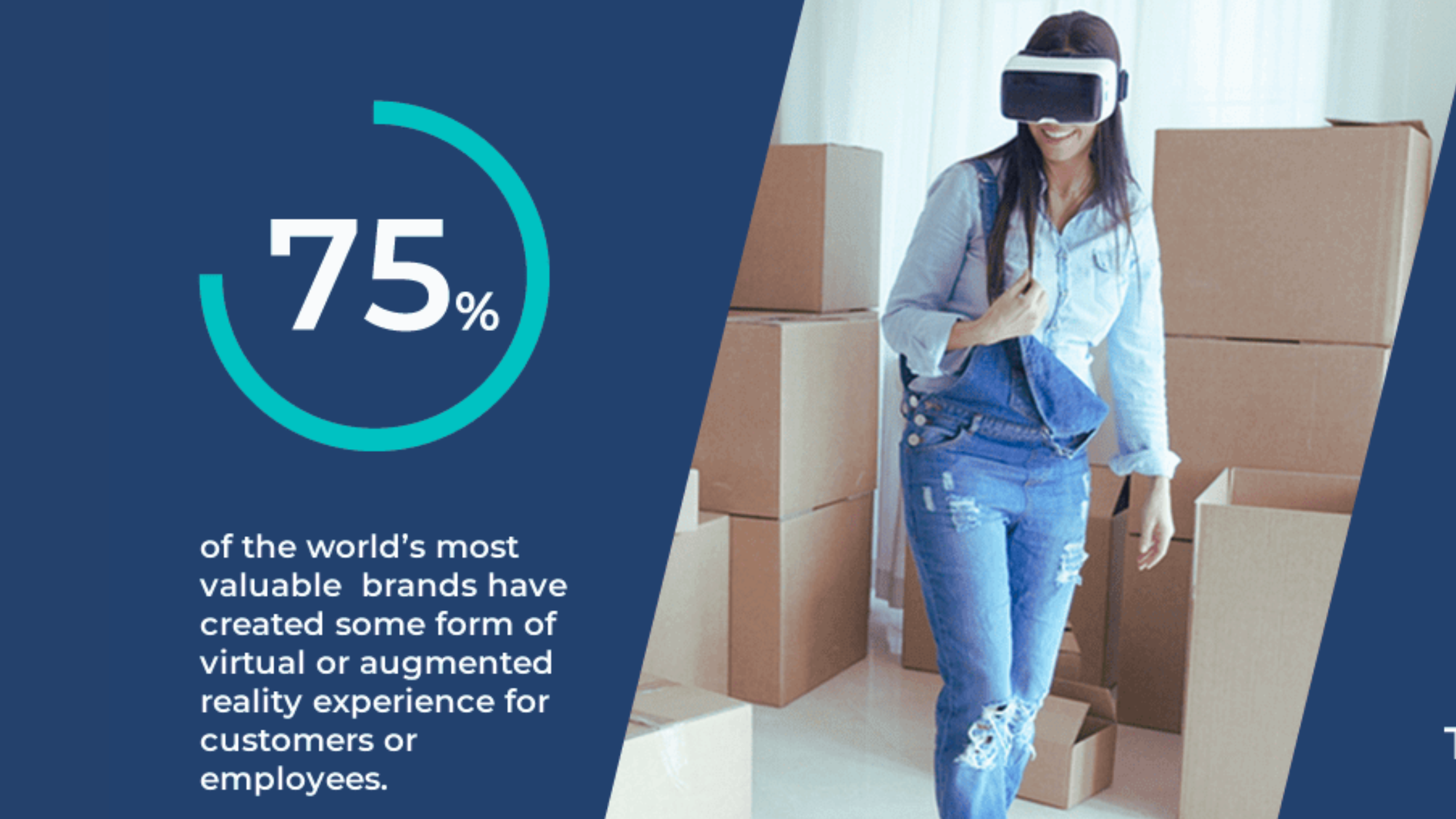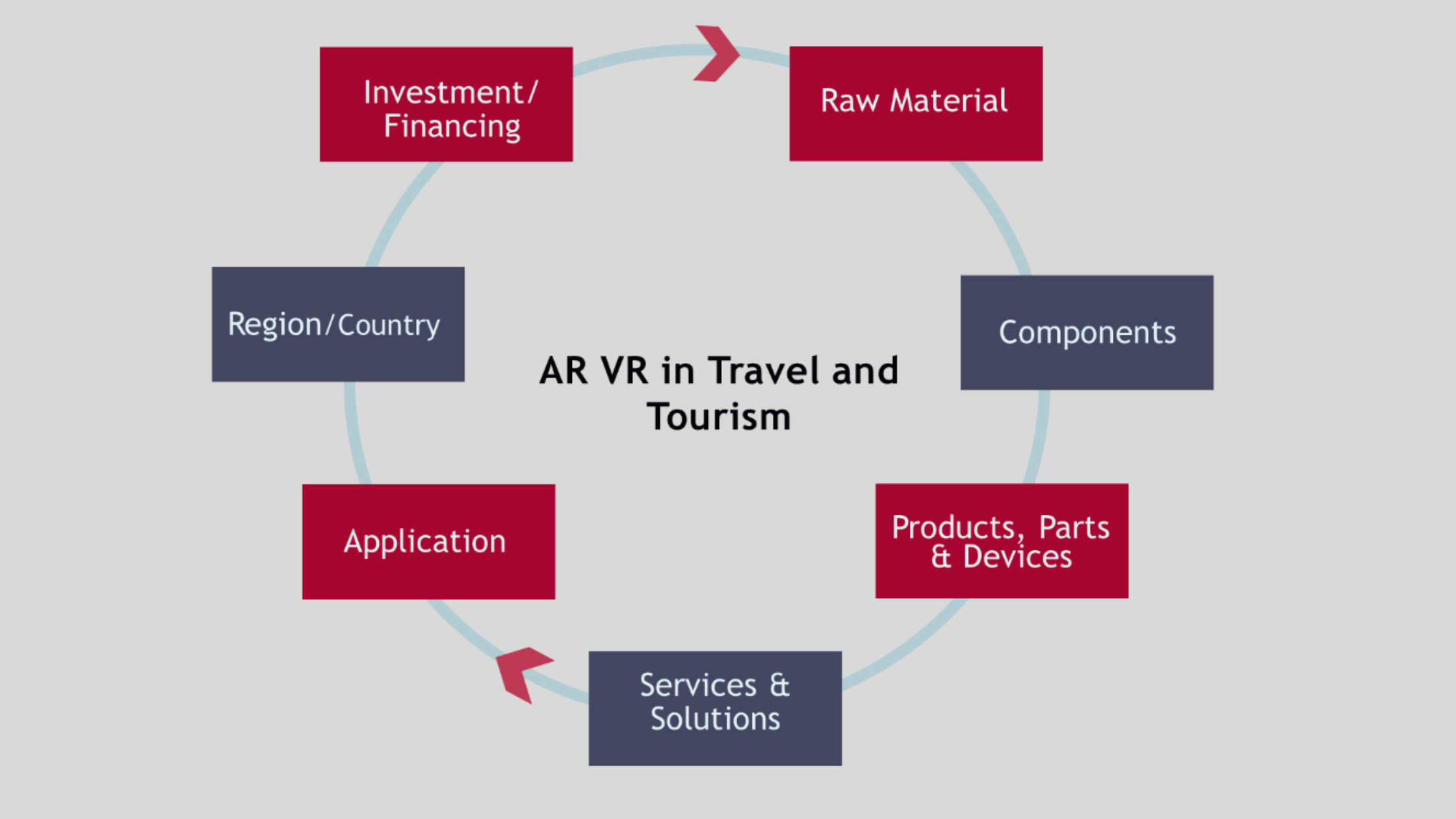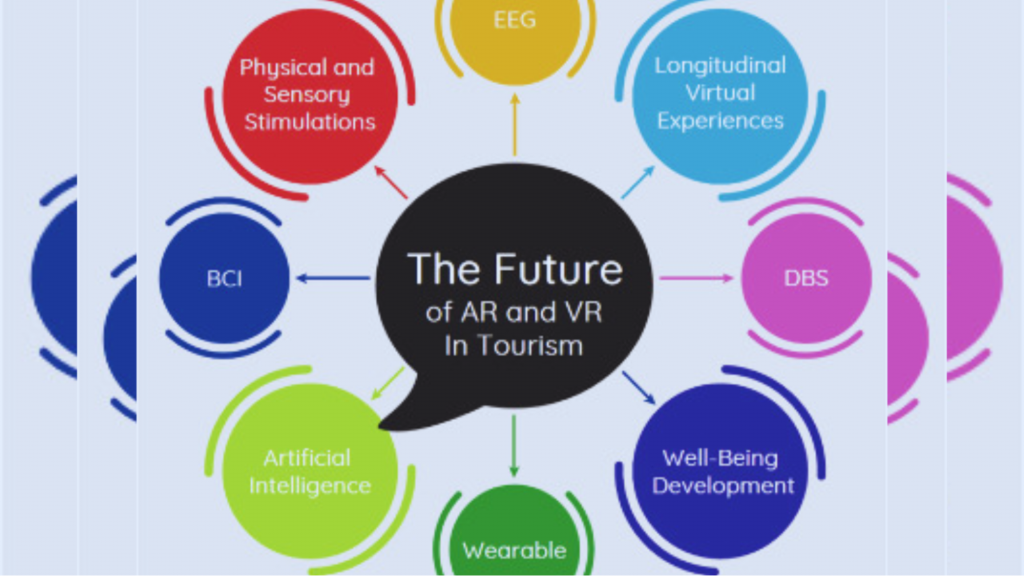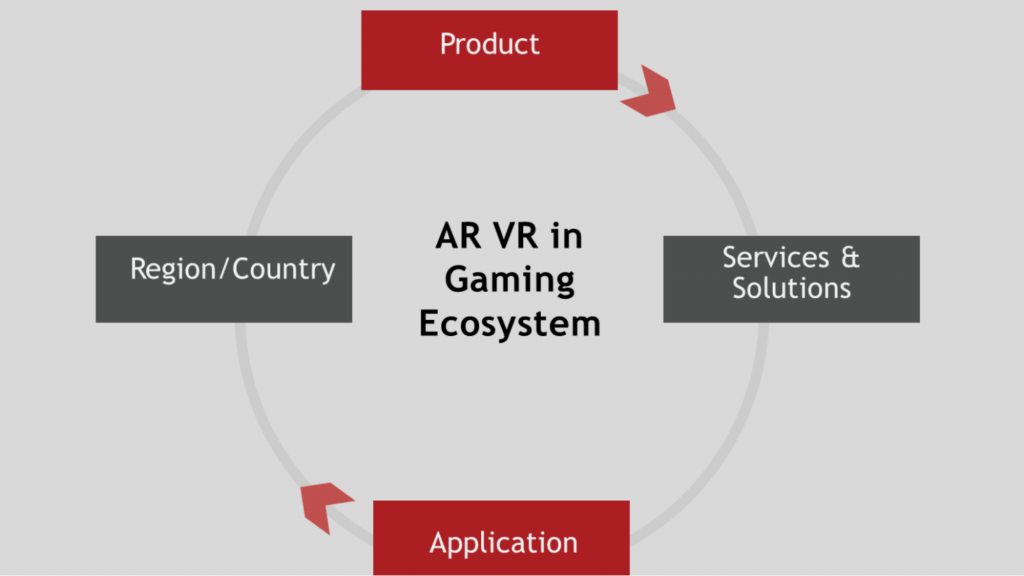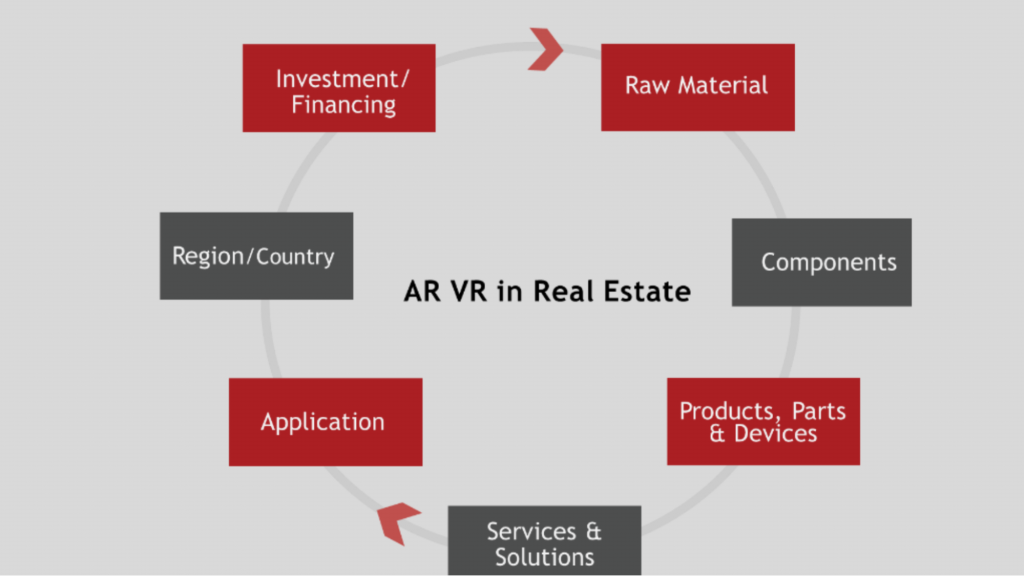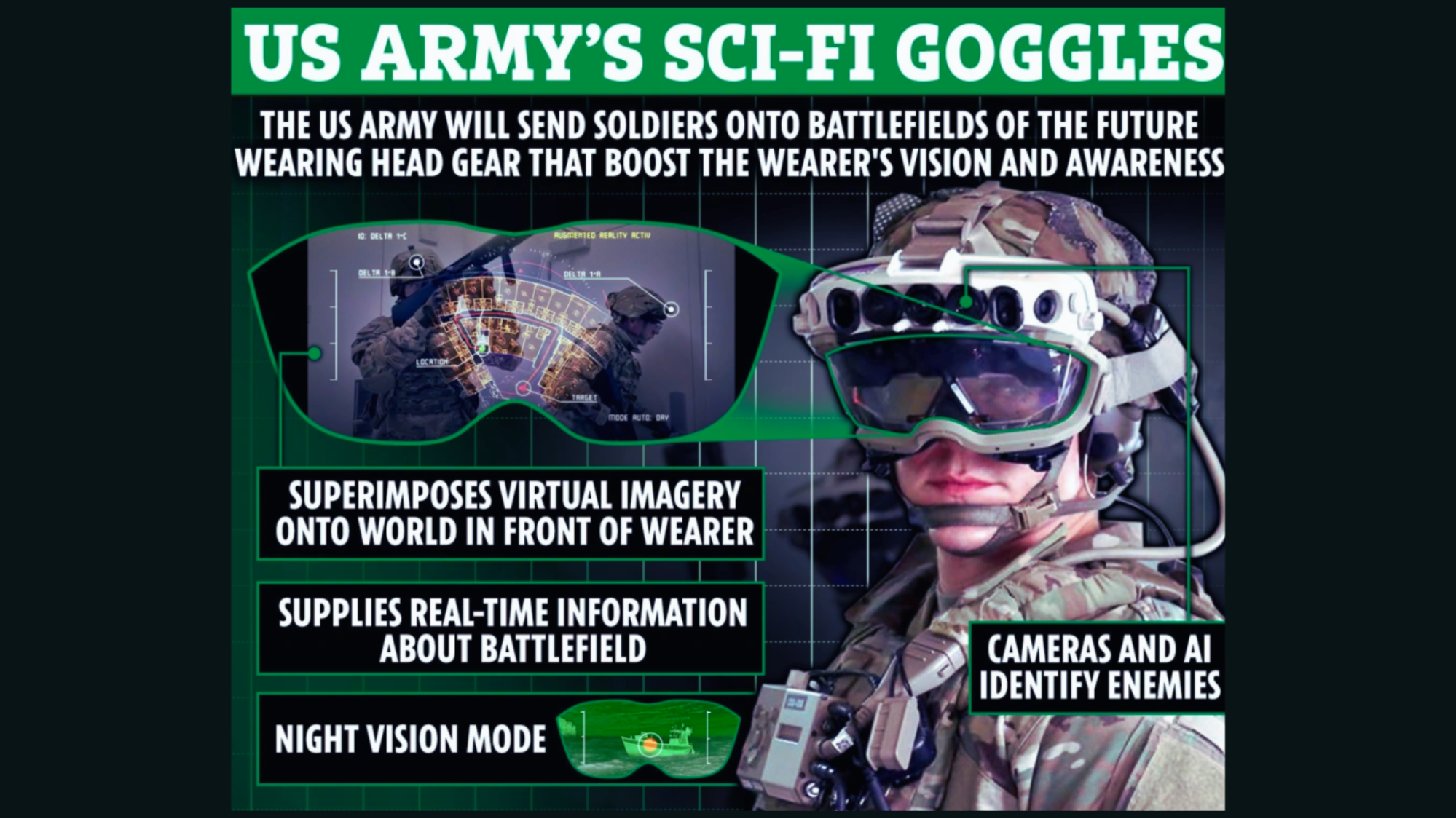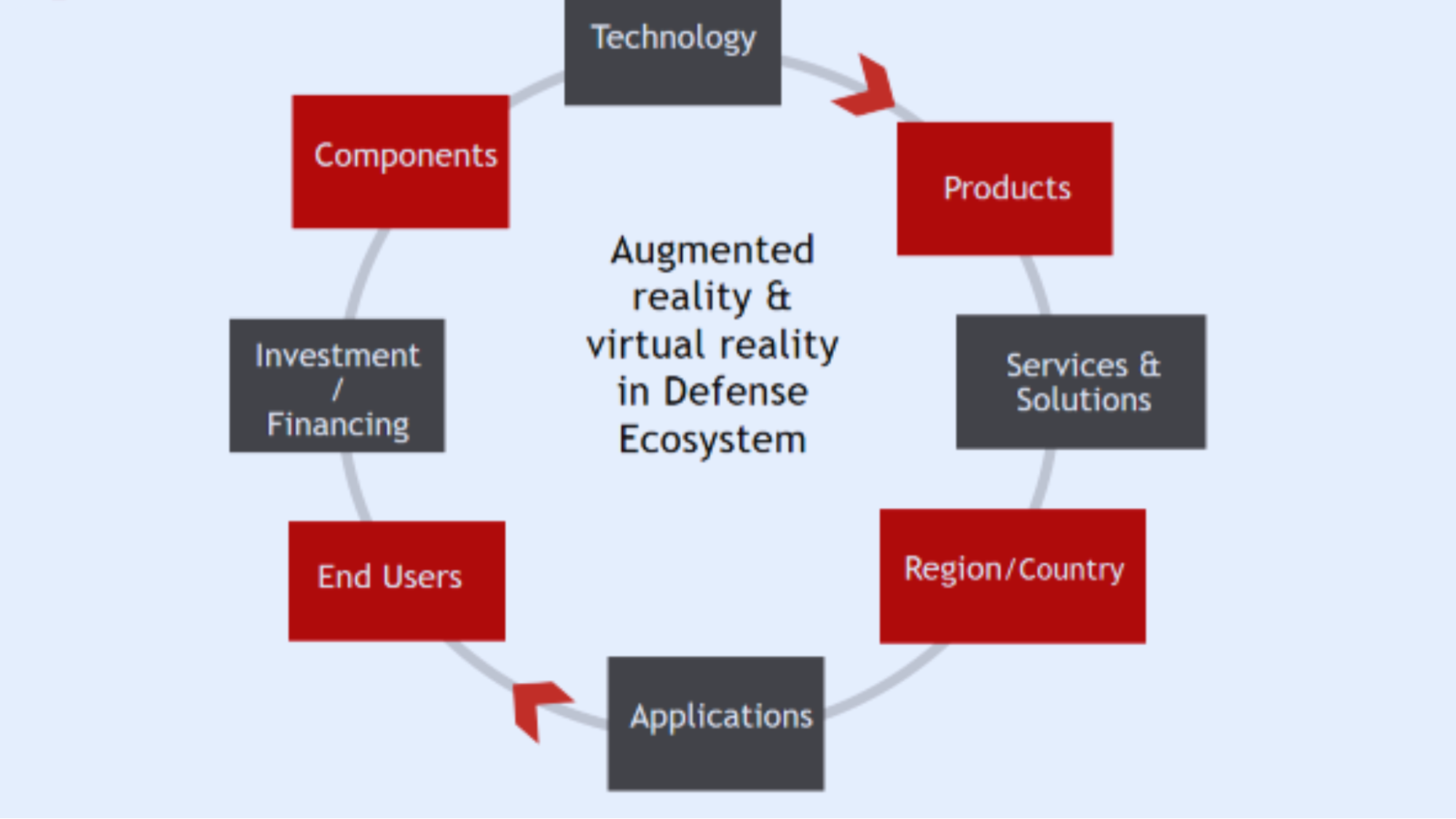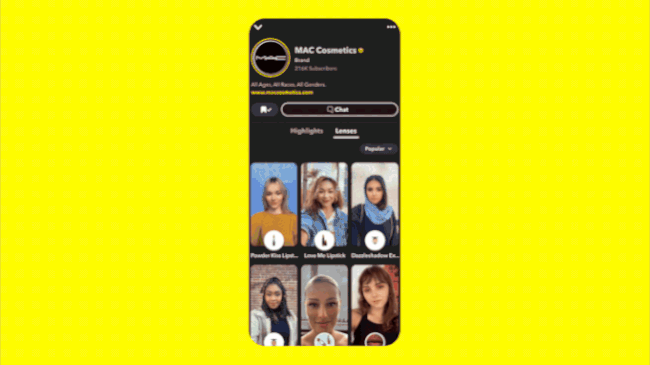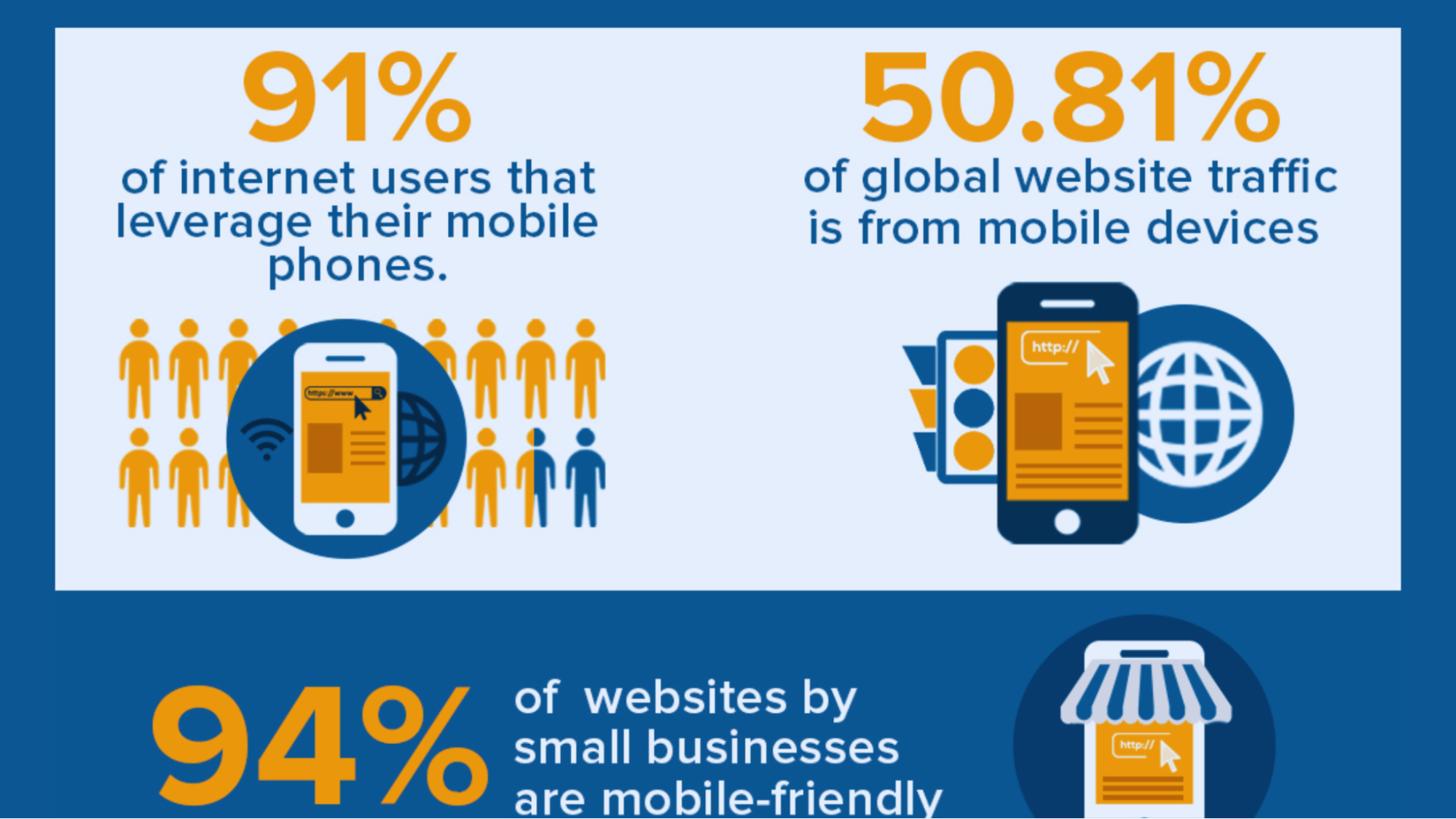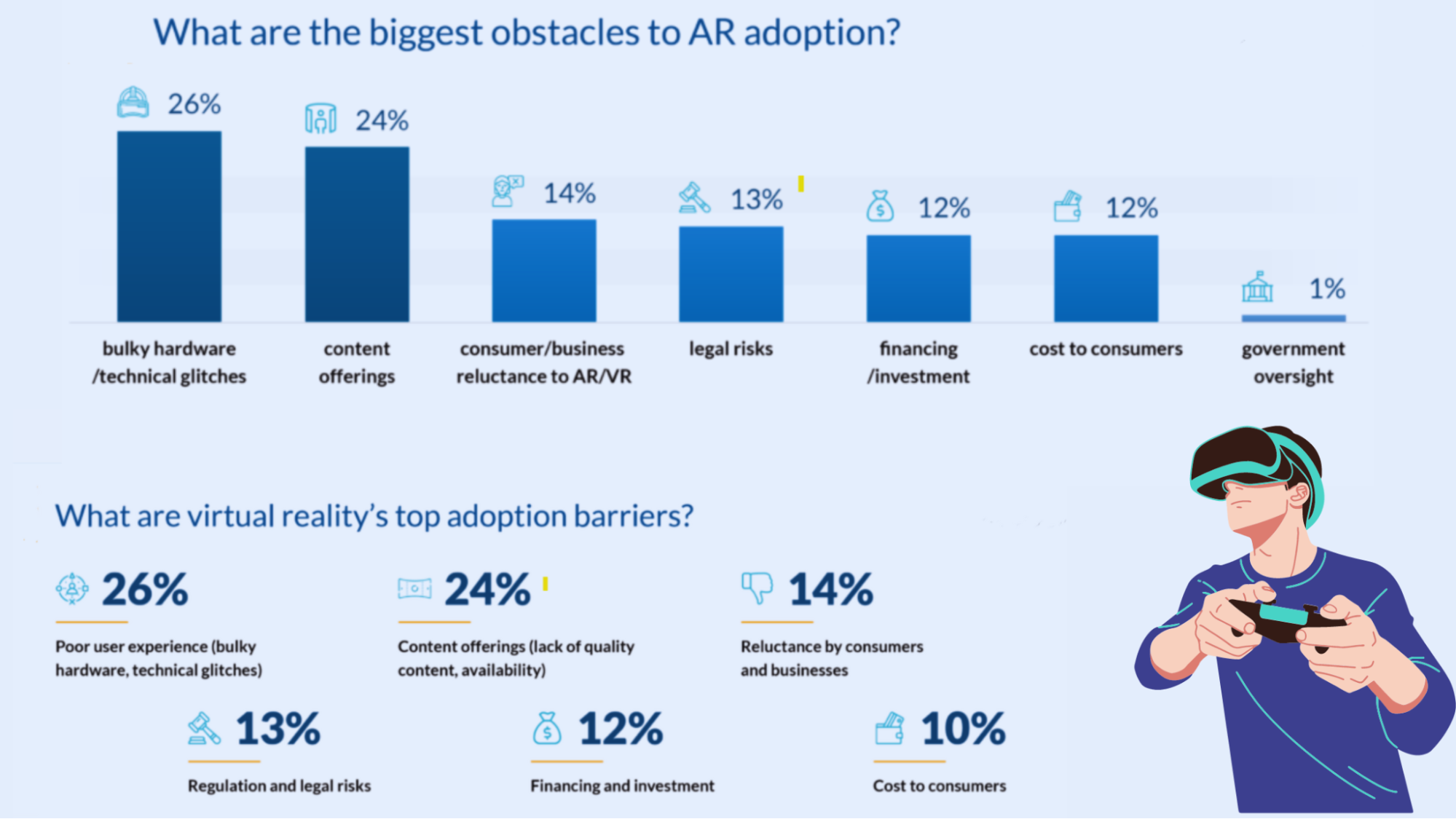How AR & VR App Development Are Transforming Businesses For The Better?
Technology has become a part of today’s businesses. Everyone is moving forward in digitalization, irrespective of their industry. In this realm of technology, AR and VR have taken a significant limelight in the market. These technologies have disrupted the whole market and altered the way organizations used to operate earlier.
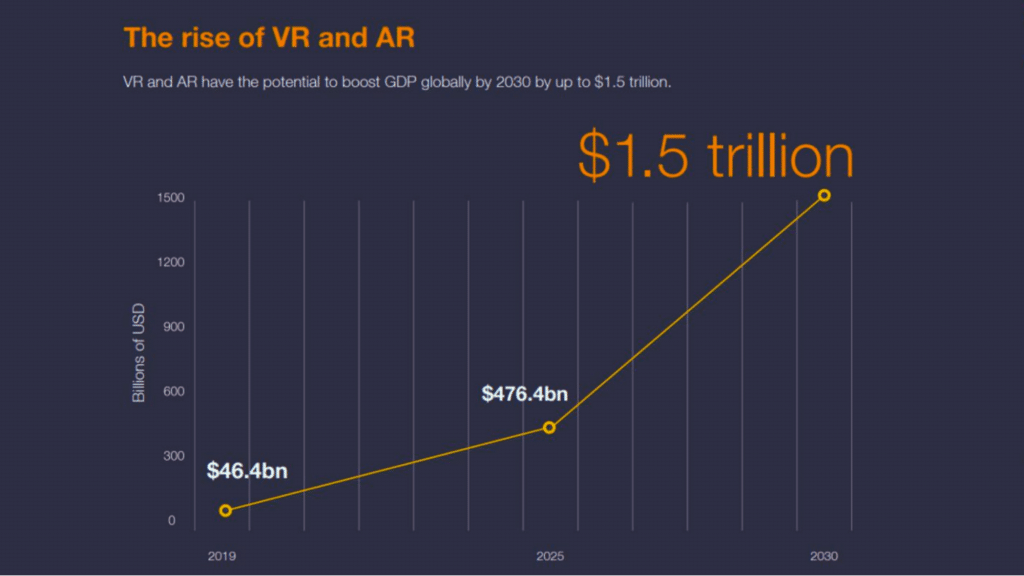
The latest study revealed around 1.5 billion AR users and 171 million VR users, equating to around 21% of the global population. Indeed the growth is at its peak, and now these technologies are revolutionizing industries. With all the new developments happening around us, this is the perfect time for companies to incorporate AR/VR with enterprise solutions to enhance the capabilities of AR/VR.
Companies adopting AR and VR solutions have experienced a significant increase in profits while opening up new opportunities and creating an exciting future. AR/VR provides a captivating experience for the user by delivering additional insights based on real-time data.
The ongoing hype of AR/VR urges us to dig deeper into these technologies and explore them in detail. That’s what this blog post also aims to do. Here, we will discuss everything about AR/VR that one should know before adopting these technologies.
So, let’s get started and know everything about AR/VR without further ado.
What is Augmented Reality?
Augmented Reality (AR) is a technology that blends virtual elements with the physical world in real time. It enables users to experience an enhanced version of reality by superimposing digital information, such as images, 3D models, videos, sound, and other media, over the real world.
The technology creates a more interactive and immersive experience, allowing users to interact with virtual objects as if they were real. We can experience AR through various devices, such as smartphones, tablets, smart glasses, head-mounted displays, and other specialized hardware.
We use AR applications in various fields, such as education, entertainment, gaming, retail, and advertising. For instance, AR can be used in education to create interactive lessons, simulations, and educational games. In entertainment, AR can create games that blur the lines between the real world and virtual reality. In retail, it can enhance shopping experiences, such as trying on virtual clothing and accessories and previewing furniture in a room.
AR is different from Virtual Reality (VR), which completely replaces the actual world with a virtual one. AR, on the other hand, enhances the real world by overlaying digital information. It allows users to experience the real world and virtual elements simultaneously, creating a more natural and intuitive experience.
How does AR work?
Augmented Reality (AR) works by superimposing digital information, such as graphics, videos, or 3D models, on the real world using a device, such as a smartphone or a tablet, equipped with a camera and AR software.
The AR software uses computer vision techniques to detect and track real-world objects and align digital information with the physical environment. The result is a composite view of the natural and virtual worlds.
What is Virtual Reality?
“75% of the top companies have running VR projects”.
Virtual Reality (VR) is a computer-generated simulation of a 3D environment that a person can interact with in a seemingly real or physical way using unique and advanced electronic equipment, such as a headset with sensors.
The person is immersed within this environment, allowing them to explore and interact with virtual objects and scenarios as if they were real. VR is used in various applications, such as gaming, entertainment, education, and training, to provide a more interactive and engaging experience than traditional forms of media.
How Virtual Reality Works?
Virtual Reality works by using a combination of hardware and software to create an immersive and interactive experience for the user. The following are the key components:
- Head-Mounted Display (HMD): A headset containing a screen in front of each eye creates a stereoscopic 3D image and a wide field of view.
- Sensors: Devices such as accelerometers, gyroscopes, and magnetometers that track the user’s head and hand movements in real-time.
- Computers: High-performance computers that generate the VR environment and handle processing the user’s movements and interactions.
- Input Devices: Controllers or handheld devices allow users to interact with the virtual environment.
- Software: Programs that create and render the 3D environment, process user inputs, and provide real-time feedback to the user.
The VR headset, sensors, and input devices track the user’s movements and provide a sense of presence within the virtual environment. The computer processes this information generates the VR environment in real-time and renders it on the headset’s screens. Users can interact with the virtual environment through the input devices, creating a fully immersive experience.
How AR and VR Work Together?
AR and VR are closely related technologies but have different purposes. AR enhances the real world by adding digital information, while VR creates a wholly artificial environment that replaces the real world.
These two technologies can work together by combining the strengths of each technology. For example, AR can provide a real-world context for VR experiences, or VR can offer a more immersive and interactive environment for AR applications.
For example, in industrial training, VR can provide a safe environment for workers to practice and simulate tasks. In contrast, AR can provide additional information, such as guidelines or instructions, to assist the workers in performing the tasks.
Therefore, AR and VR complement each other by providing different perspectives and opportunities for immersive and interactive experiences.
The Key Differences Between Augmented Reality & Virtual Reality
The Current Status Of AR & VR In The Market
Augmented reality and virtual reality has gained significant attention in the past year. The top business giants have joined this revolution and secured their position in the market. With the constant technological advancements and increasing 5G connections, we are set to have a bright future in the coming future.
- The AR & VR market can generate US$31.12 billion in revenue by 2023.
- By 2027, revenues are expected to grow at a CAGR of 13.72%, resulting in a market volume of US$52.05 billion.
- The United States is expected to generate the most revenue in 2023, with a market volume of US$8,568.00 million.
- By 2027, 2,593.1 million users are expected to use AR & VR.
- In 2023, AR Software will account for the largest share of the market with a market volume of US$11.58 billion.
- The average revenue per user (ARPU) will reach US$14.08.
Augmented Reality
Social media apps, such as Snapchat, Instagram, Facebook, and the recently popular TikTok, have caused quite a stir about augmented reality in the consumer landscape. A plethora of new lenses and features have captivated consumers around the globe, making them nearly indispensable.
Augmented reality has also established its presence in gaming and eCommerce applications; one of the most well-known AR games is Pokémon Go, having yielded a massive 600 Million downloads. As more and more gaming apps copy this model, we can anticipate robust market growth.
AR has begun to find its footing in eCommerce, with furniture apps like Ikea Place and Wayfair or makeup applications like Sephora capitalizing on it. However, while software has been conquering the space since long before, hardware is just starting to pick up momentum. Apple’s upcoming foray into the industry with their AR glasses that will compete with Microsoft’s HoloLens is likely to bring about a further acceleration of the market development.
Virtual Reality
Virtual reality has been a popular technology for the past few years, with apps like Google Earth.
However, VR technology will continue to advance, and headsets, mainly stand-alone units, will become more durable. Over one-third of total unit sales are accounted for by Meta’s VR headset, Meta Quest. There were only elementary games early in the adoption phase, but the market rapidly moved toward more sophisticated games requiring more user interaction.
Benefits of AR & VR App Development for Businesses
AR/VR technology offers numerous benefits, including enhanced user experience, increased productivity, improved training, and better marketing and advertising. So, let’s take a closer look at the top benefits of augmented and virtual reality app development.
1. Enhanced Customer Experience
Augmented Reality (AR) and Virtual Reality (VR) technology have the potential to revolutionize the way businesses interact with their customers. By providing immersive and interactive experiences, AR & VR can enhance the customer experience in several ways.
For example,
➤Product Demonstration: Create interactive product demonstrations that allow customers to experience a product or service in a virtual environment before making a purchase. For example, furniture retailers can use AR to show customers how a piece of furniture will look in their home before buying it.
➤Virtual Showrooms: Customers can explore products and services in a realistic environment in the virtual showrooms. It can save businesses the cost of physical galleries and allow customers to experience products and services anywhere in the world.
➤Interactive Training: Provide customers with interactive training sessions, making understanding and retaining information easier. For example, a car manufacturer can use VR to provide customers with an immersive training experience on how to use their new car’s features.
➤Customer Support: AR & VR can also provide customers with virtual support, allowing them to interact with a product or service in a virtual environment and receive assistance from a customer support representative.
➤Enhanced Retail Experience: Improve the retail experience by allowing customers to explore products and services in a virtual environment. For example, a clothing retailer can use AR to enable customers to try on clothes virtually without visiting a physical store.
Overall, AR & VR technology can enhance the customer experience by providing a more engaging and interactive way for customers to interact with products and services, ultimately leading to increased customer satisfaction and loyalty.
2. Increased Productivity
AR (Augmented Reality) and VR (Virtual Reality) technology can increase productivity in various industries. Here are a few ways they have done so:
➤Training & Simulation: Create immersive training simulations, allowing employees to practice in a safe, controlled environment. For example, in the construction industry, workers can use VR to train on complex machinery and procedures before working on actual construction sites.
➤Collaboration: Allow remote teams to work together in a shared virtual space, reducing the need for travel and increasing efficiency. For example, architects and engineers can use VR to walk through a virtual model of a building, making changes in real time and reducing the need for multiple on-site visits.
➤Visualization & Prototyping: Quickly and easily visualize and test product designs, reducing the time and costs associated with traditional prototypes. For example, automobile manufacturers can use VR to test and fine-tune car designs, make changes, and identify potential issues before physical prototypes are built.
➤Customer Engagement: AR and VR can create immersive, interactive experiences for customers, giving them a deeper understanding of a product and increasing engagement. For example, furniture retailers can use AR to allow customers to see how furniture would look in their homes before making a purchase.
Therefore, AR and VR technologies can increase productivity and efficiency in various industries by providing new ways of training, collaborating, visualizing, and engaging with customers.
3. Better Marketing & Sales
Augmented Reality (AR) and Virtual Reality (VR) can significantly impact marketing and sales by providing unique and engaging experiences for consumers. Here are a few ways AR/VR can enhance these areas:
➤Product Demonstrations: Provide customers with a virtual product experience, allowing them to see and interact with it before making a purchase. For example, furniture retailers can use AR to let customers visualize how a piece of furniture would look in their home before making a purchase.
➤Storytelling: Create immersive brand experiences that bring products and stories to life in new and exciting ways. For example, Coca-Cola used VR to create an experience that allowed customers to virtually tour its bottling plant and learn about the production process.
➤Event Promotion: AR/VR can create virtual events, trade shows, and product launches, allowing customers to attend and participate in these events from the comfort of their homes. For example, a clothing brand could use VR to launch a virtual fashion show, allowing customers to experience the event as if they were in person.
➤Product Training: Give product training to sales teams and customers. For example, a medical device company could use VR to provide virtual training sessions for doctors and medical personnel on how to use its products.
➤Data Visualization: Visualize complex data in a more accessible and engaging way. For example, a financial services company could use AR to allow customers to visualize their investments and portfolio more interactively and engagingly.
AR/VR technology can transform how companies market and sell their products by providing customers with unique and engaging experiences that help build brand loyalty and drive sales.
4. Improved Data Analysis
Augmented Reality (AR) and Virtual Reality (VR) can improve data analysis in many ways.
➤Visualization: AR/VR provides a more immersive and interactive experience for visualizing data. By overlaying digital information on the physical world (AR) or creating a completely immersive digital environment (VR), data can be more easily understood and remembered.
➤Data Exploration: In AR/VR environments, users can interact with data in real time, providing a more natural and intuitive way to explore and understand complex datasets. It can lead to faster and more accurate insights.
➤Collaboration: AR/VR allows multiple users to interact with data in the same virtual environment, enabling remote collaboration and increasing efficiency in group data analysis.
Example: AR/VR can visualize and explore building designs and construction plans in architecture. With AR, architects and engineers can see how their designs will look in the real world and make adjustments on the fly. In VR, stakeholders can walk through virtual representations of buildings, allowing them to experience the design and identify potential issues before construction begins.
So, AR/VR technology provides new opportunities for data analysis and visualization, improving the speed and accuracy of insights and facilitating collaboration and data exploration.
5. Cost Saving
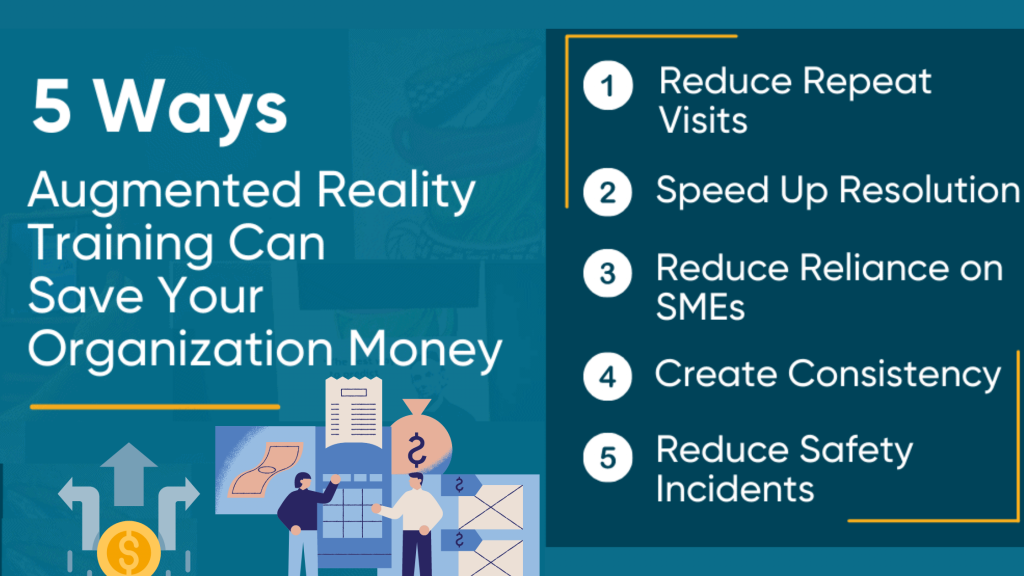
AR (Augmented Reality) and VR (Virtual Reality) technology can help organizations to save costs in various ways. For example,
➤Remote Collaboration: Facilitate remote collaboration, allowing teams to work together in virtual environments, reducing the need for travel, and reducing associated costs such as transportation, accommodation, and time away from work.
➤Training and Simulation: AR/VR can be used for training, allowing employees to practice procedures in a virtual environment before performing them in real life, reducing the risk of mistakes and associated costs. For example, in the aviation industry, pilots can use VR simulations to practice emergency procedures, reducing the need for costly physical simulations.
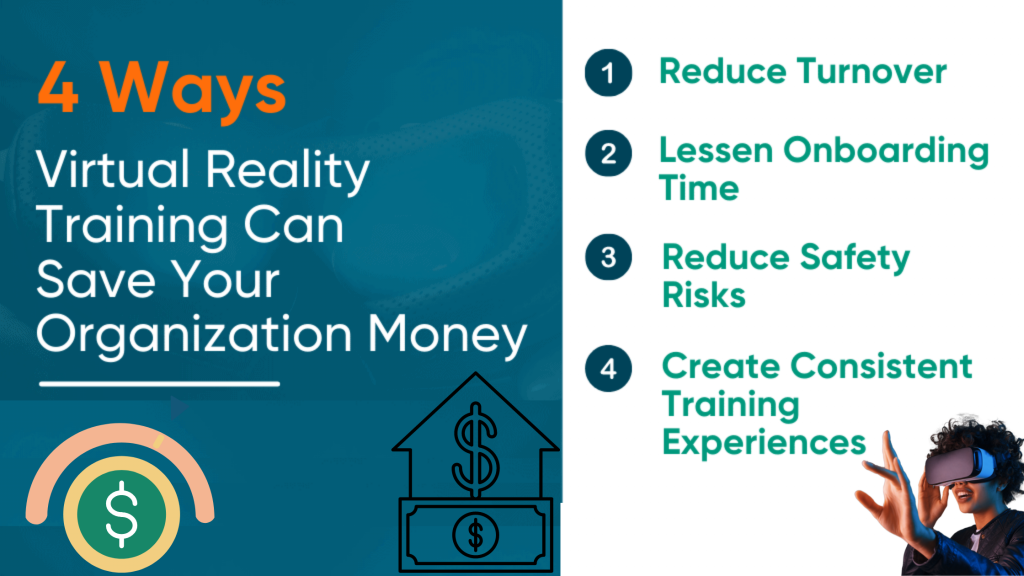
➤Product Design and Testing: Simulate and test products in real-world environments, reducing the need for physical prototypes and the costs associated with producing, testing, and iterating them.
➤Customer Experience: Enhance the customer experience, allowing organizations to provide virtual product demonstrations and reducing the need for physical products and the costs associated with storage, shipping, and handling.
➤Maintenance and Repair: Assist with maintenance and repair, providing remote support and guidance to technicians and reducing the need for on-site visits and associated costs.
AR/VR technology can help organizations reduce costs in various ways, from remote collaboration and training to product design and customer experience, making it a valuable tool in cost management.
6. Increase Business Reach
Augmented Reality (AR), and Virtual Reality (VR) can significantly increase a business’s reach by offering new and engaging ways to interact with customers. Here are a few ways AR/VR can enhance a business’s reach:
➤Product Demonstrations: Allow businesses to demonstrate their products more interactively and engagingly, allowing customers to get a hands-on experience before making a purchase. For example, an appliance retailer could use AR to show customers how a specific refrigerator model would look in their kitchen, helping to increase customer engagement and drive sales.
➤Virtual Events: With the current pandemic, many businesses have turned to virtual events to reach customers. AR and VR can enhance these events by creating a more immersive experience, allowing attendees to explore a virtual environment and interact with other attendees and the event’s host.
➤Training and Education: AR and VR can provide a more interactive and engaging learning experience. For example, a manufacturer could use VR to tour its production facilities, allowing employees to learn about the company’s processes in a safe and controlled environment.
➤Customer Service: Enhance customer service by allowing customers to visualize and interact with products in a virtual environment. For example, a furniture retailer could use AR to show customers how a specific piece of furniture would look in their home, helping to increase customer engagement and reduce the need for returns.
AR and VR can increase a business’s reach by offering new and engaging ways to interact with customers through product demonstrations, virtual events, training, education, or customer service.
7. Time-Saving Technologies
AR/VR technology can save time for businesses in many ways. Let’s understand how:
➤Streamlining Processes: Automate repetitive tasks, reducing the time and effort required to complete them. For example, in manufacturing, AR/VR automates quality control checks and reduces the time needed for manual inspection.
➤Improving Collaboration: Facilitate remote collaboration and communication, allowing teams to work together in real-time regardless of location. It eliminates the need for travel time and can increase productivity.
➤Enhancing Training: Provide hands-on training in a simulated environment, reducing the time needed for on-the-job training and minimizing the risk of accidents and errors.
➤Improving Data Visualization: AR/VR technology can provide visual representations of complex data, making it easier to understand and analyze. It can save time by reducing the need for manual data analysis and interpretation.
➤Streamlining Design and Prototyping: Create virtual prototypes and mock-ups, reducing the time and cost of creating physical prototypes. It allows businesses to iterate on designs and make changes in real-time quickly.
➤Reducing Physical Site Visits: Provide virtual access to physical sites, reducing the need for on-site visits and saving time and travel costs.
Thus, AR/VR technology can significantly save businesses time by streamlining processes, improving collaboration, enhancing training, improving data visualization, simplifying design and prototyping, and reducing physical site visits.
8. Ease of Mobility
Augmented Reality (AR) and Virtual Reality (VR) are transforming the way businesses operate, and they have the potential to ease mobility in several ways:
➤Remote Work: Virtual workspaces allow employees to work from anywhere, reducing the need for in-person interaction and commuting. It can result in increased productivity and cost savings for businesses.
➤Virtual Meetings: Virtual meeting spaces where teams collaborate and communicate in real-time, regardless of location. It can help businesses save time and reduce travel costs.
➤Remote Training: Create immersive and interactive training experiences that can be accessed from anywhere, reducing the need for in-person training and the associated travel costs.
➤Virtual Site Visits: Virtual tours of remote locations allow teams to inspect and evaluate sites without needing in-person visits.
➤Telemedicine: Provide remote medical consultations, reducing the need for patients to travel to medical facilities and increasing access to healthcare services.
Therefore, AR/VR technologies offer businesses a new level of mobility and flexibility, allowing them to reach new customers, improve efficiency, and reduce costs.
By leveraging these technologies, companies can increase their competitiveness and stay ahead in today’s fast-paced and ever-evolving business environment.
Industries That Can Benefit from AR & VR App Development
Augmented Reality (AR) and Virtual Reality (VR) have transformed how businesses operate and engage with customers, creating new opportunities for revenue growth, cost savings, and improved customer experiences.
1. Healthcare
Augmented Reality (AR) and Virtual Reality (VR) technologies have been increasingly adopted in the healthcare industry to improve patient outcomes and experiences. Here’s how AR/VR can help healthcare in detail with some real-life examples.
➤Medical Education and Training: Create realistic simulations for medical students and healthcare professionals to practice procedures, diagnose conditions and learn anatomy in a safe, controlled environment. For example, medical schools can use VR headsets to provide students with hands-on experience in surgeries or other medical procedures.
➤Pain Management: Manage pain effectively by providing immersive distraction therapy. For example, a VR headset can transport a patient in pain to a virtual world where they can play games, explore new environments, or meditate. It can help reduce their perception of pain.
➤Physical Therapy and Rehabilitation: Create interactive and gamified exercises to aid physical therapy and rehabilitation. For example, patients can use AR technology to perform exercises that display virtual objects they can interact with, making therapy more engaging and enjoyable.
➤Mental Health Treatment: VR can provide a safe and controlled environment for individuals with anxiety, phobias, or post-traumatic stress disorder (PTSD) to confront and overcome their fears. For example, a VR headset can simulate situations that trigger anxiety, allowing patients to work through their fears in a controlled environment.
➤Remote Consultations: Provide remote consultations, enabling healthcare professionals to diagnose and treat patients from a distance. For example, a specialist can use AR technology to view a patient’s medical scans remotely and provide guidance to a primary care physician, reducing the need for in-person visits.
These are just a few examples of how AR/VR can improve healthcare outcomes. By leveraging these technologies, healthcare providers can deliver more effective, efficient, and engaging patient treatments.
2. Education
Augmented Reality (AR) and Virtual Reality (VR) are increasingly used to provide students with immersive and interactive learning experiences. AR and VR technology can create an engaging and dynamic learning environment not limited by physical classrooms and teaching methods.
For example,
In science education, students can use AR and VR to visualize and interact with complex systems and models, such as the human anatomy or the solar system, in a way that is impossible with traditional textbook learning. It can enhance their understanding and retention of the material and foster curiosity and creativity.
In history education, VR can transport students to experience historical events and periods, such as the Civil War or Ancient Rome, and gain a deeper understanding of the cultural, social, and political context.
AR can provide students with an interactive language learning experience in language education, such as recognizing and translating foreign language signs and objects in real-life settings.
Therefore, AR/VR technology has the potential to revolutionize education by providing students with engaging, interactive, and immersive learning experiences that can enhance their understanding, retention, and critical thinking skills.
3. Retail
Augmented Reality (AR), and Virtual Reality (VR) technologies are transforming retail, making shopping experiences more immersive, interactive, and engaging for customers. Here’s how AR/VR is revolutionizing the retail industry. See how.
➤Product Visualization: AR/VR technologies allow customers to see how a product would look in their space before making a purchase. For example, an AR app could let customers know how a piece of furniture would look in their living room before they buy it.
➤Virtual Try-Ons: VR technology can create virtual dressing rooms, allowing customers to try on clothes and accessories before buying them. For example, a fashion retailer could use VR to create a virtual dressing room where customers can see how clothes would look on them before making a purchase.
➤Interactive Product Demonstrations: AR/VR technologies can provide interactive product demonstrations, making it easier for customers to understand how a product works. For example, an electronics retailer could use AR to show customers how to use a new gadget, providing a hands-on demonstration that makes it easier for customers to understand how the product works.
➤Personalized Experiences: AR/VR technologies can provide customers with personalized shopping experiences, tailoring recommendations and product information to their preferences and needs. For example, an e-commerce platform could use VR to create a virtual store where customers can browse products based on their interests and receive personalized recommendations based on their previous purchases.
➤Virtual Tours: VR technology can create virtual tours of products and stores, allowing customers to explore products and store layouts from the comfort of their homes. For example, a home goods retailer could use VR to create virtual tours of their stores, allowing customers to explore product displays and see how items would look in their homes before making a purchase.
These are just a few examples of how AR/VR can enhance the e-commerce experience for customers. By leveraging these technologies, retailers can create more engaging, interactive, personalized shopping experiences that drive customer loyalty and sales.
4. Manufacturing
Augmented Reality (AR) and Virtual Reality (VR) technologies can greatly benefit the manufacturing sector by improving efficiency, reducing errors, and increasing worker training. Here’s how AR/VR can help the manufacturing industry. Let’s take a look at these once.
➤Remote Assistance: Provide remote assistance to workers in real-time, helping them troubleshoot problems and complete tasks more efficiently. For example, an AR app could provide step-by-step instructions to workers, making it easier for them to complete complex tasks without needing on-site assistance.
➤Quality Control: Streamline quality control processes, reducing the risk of errors and improving product quality. For example, an AR app checks parts for defects, providing workers with real-time feedback on the quality of their work.
➤Assembly and Maintenance: Train workers to assemble and maintain equipment, reducing the risk of errors and improving worker safety. For example, a VR simulation could train workers to safely operate a new piece of machinery, reducing the risk of accidents and improving worker confidence.
➤Prototyping and Design: Visualize and test prototypes, reducing the need for physical prototypes and allowing manufacturers to change their designs quickly. For example, a VR headset could create a virtual environment where manufacturers can test and refine prototypes, reducing the time and cost associated with physical prototyping.
➤Collaboration: Facilitate collaboration between workers and teams, reducing the risk of errors and improving worker efficiency. For example, a VR meeting platform could bring workers and teams together in a virtual environment, allowing them to collaborate on projects and share ideas in real time.
These examples show how AR/VR can enhance the manufacturing process. By leveraging these technologies, manufacturers can improve worker efficiency, reduce errors, and create a safer and more productive work environment.
5. Tour & Travel
Augmented Reality (AR) and Virtual Reality (VR) technologies can significantly benefit the travel industry by enhancing the customer experience, improving destination awareness, and reducing travel costs. Here’s how AR/VR can help in the travel sector:
➤Destination Awareness: Provide travelers with an immersive destination experience before they arrive, helping them make more informed travel decisions. For example, an AR app provides travelers with a virtual tour of a city, highlighting key attractions and giving them a sense of the local culture.
➤Virtual Tours: VR can provide virtual tours of attractions and destinations, allowing travelers to explore them from the comfort of their homes. For example, a travel company could use VR to create virtual tours of popular tourist destinations, giving travelers a sense of what to expect before they arrive.
➤In-Destination Experience: AR can enhance the in-destination experience for travelers, providing them with real-time information and recommendations. For example, an AR app could provide travelers with real-time information about local attractions, restaurants, and events, making it easier for them to plan itineraries and make the most of their trip.
➤Cost Savings: Reduce travel costs by eliminating the need for physical site visits and product demonstrations. For example, a travel company could use VR to create a virtual tour of a resort, allowing customers to explore the facilities and make a booking without needing a physical visit.
➤Training: Train travel industry workers to improve their knowledge and skills and enhance the customer experience. For example, a travel company could use VR to train employees on customer service, providing them with a hands-on, interactive experience that helps them better understand the needs of their customers.
With these examples, it’s clearly understood how AR/VR can enhance the travel experience for customers and improve the efficiency and competitiveness of the travel industry.
6. Entertainment
Augmented Reality (AR) and Virtual Reality (VR) technologies can significantly benefit the entertainment industry by enhancing the consumer experience and creating new forms of immersive content. Here’s how AR/VR can help the entertainment sector in detail, with examples:

➤Music and Concerts: Enhance the live music and concert experience for fans, allowing them to get closer to their favorite artists and interact with their music in new ways. For example, an AR app could provide fans with a virtual backstage experience, giving them an up-close look at the performers and their music.
➤Film and Video: Create immersive film and video experiences that allow viewers to step into the story and interact with the environment in real-time. For example, a VR film like “The Lion King: The Jungle Book” provides viewers with an immersive experience that simulates being in the African savanna with the characters.
➤Theme Parks: Enhance the theme park experience, creating new interactive content and attractions. For example, a theme park could use VR technology to create a virtual roller coaster experience, allowing riders to experience the thrill of a roller coaster without the physical limitations of a real ride.
➤Sports: Improve the sports viewing experience for fans, allowing them to get closer to the action and interact with the game in new ways. For example, an AR app could provide fans with real-time statistics and information about the players and teams, making it easier for them to follow the action and understand the game.
So, all these are some famous examples of how AR/VR can enhance consumers’ entertainment experience and create new forms of immersive content.
7. Real Estate
Augmented Reality (AR), and Virtual Reality (VR) technologies can significantly benefit the real estate industry by enhancing the property viewing experience and reducing the costs associated with buying, selling, and renting properties.
Here’s how AR/VR can aid the real estate sector. Let’s understand the process.
➤Virtual Property Tours: Virtual property tours allow prospective buyers, sellers, and renters to explore a property from the comfort of their homes. For example, a real estate company could use VR to create a virtual property tour, allowing potential buyers to explore the property in detail and get a sense of the space and layout before scheduling a physical visit.
➤Staging and Decorating: Help buyers, sellers, and renters visualize how furniture and decor might look in a space, reducing the costs associated with physical stage and decorating. For example, an AR app could be used to place virtual furniture and decor into space, allowing buyers to see how the area might look with different styles and color schemes.
➤Cost Savings: Reduce the costs associated with buying, selling, and renting properties by eliminating the need for physical visits. For example, a real estate company could use VR to create virtual property tours, allowing potential buyers to explore properties from their homes and reducing the need for physical visits.
➤Improved Presentations: Enhance property presentations, making them more engaging, informative, and effective. For example, a real estate company could use AR to create an interactive presentation of a property, highlighting key features and providing prospective buyers with real-time information about the property and its surroundings.
➤Better Decision Making: Improve decision-making for buyers, sellers, and renters by providing more accurate and detailed information about properties. For example, an AR app could give prospective buyers real-time information about the surrounding area, including local schools, amenities, and attractions, helping them make a more informed decision about a property.
These are just a few examples of how AR/VR can enhance the real estate experience for buyers, sellers, and renters and improve the efficiency and competitiveness of the real estate industry. With these technologies on board, real estate companies can create more engaging, informative, and cost-effective property experiences for their customers.
8. Military
The military domain is also significantly impacted by augmented reality and virtual reality (VR) technologies. The tech improves training and simulation, enhancing situational awareness and decision-making and reducing the costs associated with training and equipment testing.
See what role AR/VR plays in the military sector.
➤Training and Simulation: Create realistic, immersive training simulations that allow soldiers to practice skills and techniques in a virtual environment. For example, the military could use VR to create a battlefield simulation, allowing soldiers to practice responding to different scenarios and situations, improving their ability to react in real-life situations.
➤Enhanced Situational Awareness: Enhance situational awareness and decision-making in the field by providing soldiers with real-time information and intelligence about their surroundings. For example, an AR heads-up display (HUD) could provide soldiers with real-time information about enemy positions, friendly forces, and other key data, improving their ability to make informed decisions in the field.
➤Equipment Testing: Test and evaluate new equipment, reducing the costs associated with physical testing and minimizing the risk of injury. For example, the military could use VR to test and evaluate new weapons, vehicles, and other equipment, allowing them to make informed decisions about which equipment to purchase and deploy.
➤Psychological Readiness: Prepare soldiers for the psychological demands of combat by exposing them to realistic simulations of combat-related scenarios. For example, the military could use VR to simulate the sounds, sights, and other sensory inputs of combat, allowing soldiers to become more prepared and mentally resilient.
➤Cost Savings: Reduce the costs associated with training and equipment testing by eliminating the need for physical equipment and facilities. For example, the military could use VR to train soldiers and evaluate equipment, reducing the need for physical equipment and facilities and minimizing the costs associated with training and testing.
The above-defined role explains the major role of AR/VR in the defense line. They create e more realistic, immersive, and cost-effective training and testing experiences for their personnel.
9. Social Media
Though this may not have been expected, augmented and virtual reality are also changing how we use social media platforms today. These technologies have become increasingly popular in social media in recent years, offering new ways for users to engage with content and each other.
Examples of AR in social media include
➤Snapchat Lenses: Snapchat allows users to add augmented reality filters to their photos and videos, creating a more immersive and interactive experience.
➤Instagram Filters: Instagram has also embraced AR technology, allowing users to add augmented reality filters to their stories and photos.
➤Facebook Spark AR: Facebook’s Spark AR platform enables users to create and share their AR filters and effects on Facebook and Instagram.
Examples of VR in social media include
➤Facebook Horizon: Facebook Horizon is a virtual world where users can interact with each other and experience immersive, 360-degree content.
➤VR Chat: VR Chat is a social VR platform that allows users to interact with each other in a virtual world, including playing games and exploring environments together.
By incorporating AR and VR technology, social media platforms provide new and innovative ways for users to connect and engage with each other. AR and VR offer a more immersive and interactive experience, allowing users to escape reality and enter new, imaginative worlds. Additionally, these technologies provide new opportunities for brands and businesses to engage with consumers in innovative ways.
Top Examples of Successful AR & VR Applications
1. Oculus Quest and Oculus Rift S by Facebook
The Oculus Quest and Oculus Rift S are virtual reality (VR) headsets developed and manufactured by Facebook subsidiary Oculus VR. The Oculus Quest is a standalone VR headset, meaning it doesn’t require a separate computer, while the Oculus Rift S is a PC-based VR headset.
The Oculus Quest offers six degrees of freedom (6DoF) tracking, allowing users to move freely in their virtual environment and accurately reflect their movements in the VR world. The Quest has a high-resolution display and built-in speakers for an immersive VR experience. It also features two hand-held controllers for interactivity.
On the other hand, the Oculus Rift S offers a more robust VR experience with improved graphics, higher frame rates, and a larger selection of games and apps. It uses inside-out tracking, eliminating the need for external sensors and allowing for a more convenient setup. The Rift S also features updated hand controllers and improved ergonomics for a more comfortable VR experience.
The Oculus Quest and Oculus Rift S are popular VR devices and offer a range of VR experiences, from gaming to education and training to entertainment.
2. PlayStation VR by Sony
PlayStation VR is a virtual reality headset developed and produced by Sony Interactive Entertainment, specifically for the PlayStation 4 gaming console. It was first released in October 2016 and has become one of the most popular VR devices on the market.
The headset uses a combination of LED lights and sensors to track the user’s head movements, allowing them to look around the virtual world in real time. The headset also comes with two Move controllers, which interact with the VR environment and simulate hand movements.
The PlayStation VR has a high-resolution OLED display and 3D audio technology, creating a fully immersive VR experience. It supports various games and applications, from fast-paced action games to relaxing virtual reality experiences.
One of the main advantages of the PlayStation VR is its compatibility with the extensive library of games available for the PlayStation 4 and its ease of use and affordability compared to other high-end VR systems.
3. HTC Vive and Vive Pro by HTC
The HTC Vive and Vive Pro are virtual reality (VR) headsets developed and manufactured by HTC. It was released in April 2016 and was one of the first consumer-oriented VR systems to hit the market.
The headset uses room-scale VR technology, allowing users to move around their physical space and have those movements accurately reflected in the virtual environment. It comes with two hand-held controllers and two base stations, which track the user’s actions and allow for a more immersive VR experience.
The Vive Pro builds on the original Vive’s features, offering improved resolution, audio, and comfort. The Pro features dual OLED displays with a combined resolution of 2880 x 1600, offering a more vivid and detailed VR experience. It has integrated headphones for improved audio and a redesigned head strap for greater comfort.
The HTC Vive and Vive Pro support a wide range of VR experiences, from gaming to education and training to entertainment. The Vive Pro is aimed at enterprise and professional customers, while the Vive is geared toward consumers.
4. Microsoft HoloLens by Microsoft
Microsoft HoloLens is a mixed-reality headset developed by Microsoft. It was first released in March 2016 and has become one of the market’s most recognizable and popular mixed-reality devices.
Unlike traditional virtual reality (VR) devices, which immerse the user in an entirely virtual environment, the HoloLens blends the physical and virtual worlds, creating a mixed-reality experience. It lets users see virtual objects and information superimposed on their real-world surroundings.
The HoloLens features a holographic display and uses a combination of cameras, microphones, and sensors to track the user’s movements and surroundings. It also has built-in speakers and a microphone, allowing users to interact with virtual objects and information using voice commands and hand gestures.
The headset is designed for various uses, from gaming and entertainment to education, training, and industrial applications. It offers a unique mixed-reality experience that allows users to interact with virtual objects more naturally and intuitively.
5. Google Cardboard and Daydream View by Google
Google Cardboard and Daydream View are both mobile virtual reality (VR) platforms developed by Google. Google Cardboard was first released in 2014 and was designed to be a low-cost and accessible way for people to experience VR. The Daydream View, released in 2016, is a more advanced and sophisticated VR platform.
Google Cardboard is a cardboard headset that users can fold and assemble themselves. The headset is designed to hold a smartphone, which serves as the display and processing unit for the VR experience. The Cardboard combines the smartphone’s accelerometer and gyroscope to track head movements and provide an essential VR experience.
The Daydream View is a fabric-covered VR headset designed to be more comfortable and durable than the Cardboard. It has a built-in touchpad and hand-held controller, allowing users to interact with the virtual environment more intuitively and immersively. The Daydream View is compatible with Android smartphones and supports a growing library of VR games, apps, and experiences.
Both Google Cardboard and Daydream View are designed to be affordable and accessible ways for people to experience VR. The Cardboard is ideal for those just starting to explore VR, while the Daydream View offers a more advanced and immersive VR experience.
Top Tips for Developing AR & VR Apps
Here are the top tips for developing AR/VR apps:
Tip 1- Define the use case.
A use case for AR/VR app describes a specific scenario in which a user interacts with the AR/VR technology to accomplish a particular goal. To define the use case, you need to understand the user’s needs, their environment, and the requirements of the AR/VR solution.
For example, consider a use case for an AR/VR-powered interior design app. The user is a homeowner who wants to visualize how furniture would look in their living room. The use case would be as follows:
➤The homeowner opens the AR/VR interior design app on their smartphone or tablet.
➤The app prompts the user to take a photo of the living room to create a 3D space model.
➤The homeowner selects a piece of furniture from the app’s library and places it in the living room in the AR view.
➤The homeowner can walk around the room to see how the furniture looks from different angles.
➤If the homeowner is satisfied with the placement, they can save the configuration. If not, they can adjust the placement and try again.
This use case provides a clear picture of how AR/VR technology solves a specific problem for the user and meets their needs. Defining the use case helps you design a more user-centered and effective AR/VR solution.
Tip 2- Choose the right platform.
Choosing the right platform for your AR/VR app depends on several factors, including your target audience, the nature of the experience you want to provide, and the resources available.
Here are some considerations to help you choose the right platform:
➤Target Audience: Determine which devices and platforms your target audience will use. For example, if you are targeting gamers, the PlayStation VR or Oculus Quest 2 may be the best options. The Microsoft HoloLens or Magic Leap One may be more suitable for targeting professionals.
➤Experience: Consider the type of AR/VR experience you want to provide. If you want a high-end, immersive experience, consider a PC-based platform like the Oculus Rift or HTC Vive. If creating a more mobile-focused experience, consider platforms like ARKit for iOS or ARCore for Android.
➤Development Resources: Consider the development resources available, including your team’s experience and expertise with specific platforms and your budget for hardware and software.
➤Future Plans: Consider the long-term plans for your AR/VR app and choose a platform that supports your goals. For example, if you plan to expand to other platforms, consider a platform with a cross-platform development kit or a large developer community.
It’s essential to research and tests multiple platforms before making a final decision to ensure that you choose the best platform for your AR/VR app.
Tip 3-Focus on User Experience
AR/VR apps require a high level of interactivity and user engagement. Ensure that the app has a seamless and intuitive user interface and provides a smooth experience for the user.
Here are some steps to help you focus on user experience for AR/VR apps:
➤Define your target audience: Understanding who your audience is and their needs and expectations are crucial for designing an effective user experience.
➤Create user personas: Based on your target audience, create user personas that represent different types of users and their goals and behaviors.
➤Conduct user research: Gather user feedback about their experiences and use that information to inform your design decisions.
➤Define clear user flow: Clearly define the steps users need to take to achieve their goals and ensure that the AR/VR experience is intuitive and easy to navigate.
➤Design for accessibility: Consider accessibility in your design, such as using large text and contrasting colors, to ensure that users with disabilities can use your app.
➤Test and iterate: Regularly test your app with users and gather feedback to improve the user experience continually.
➤Stay up-to-date with technology advancements: Stay informed about AR/VR technology advancements and how they can enhance the user experience.
Tip 4-Ensure Performance
AR/VR apps are graphics-intensive and require a lot of processing power. Ensure your app runs smoothly on different devices and has good frame rates, low latency, and minimal lag.
Here are some ways to ensure the performance of AR/VR apps:
➤Optimize 3D models: Use lightweight 3D models with minimal polygon, ensuring textures are compressed.
➤Use appropriate hardware: Ensure the AR/VR device used meets the minimum specifications required for the app.
➤Reduce Latency: Minimize the delay between the user’s actions and the display of the result to provide a seamless experience.
➤Manage frame rate: Maintain a consistent frame rate of 60 frames per second to avoid jitters and stutters.
➤Dynamic Resolution Scaling: Dynamically adjust the app’s resolution based on the device’s performance to maintain consistent frame rates.
➤Use efficient rendering techniques: Use GPU-based techniques such as Single Pass Stereo rendering to improve performance.
➤Optimize for mobile devices: If the AR/VR app targets mobile devices, consider optimizing for battery life and memory usage.
➤Continuously monitor and test: Monitor and try the app’s performance and update as needed to maintain optimal performance.
Tip 6-Consider Cross-Platform Development
By developing your AR/VR app for multiple platforms, you can reach a wider audience and tap into the potential of different AR/VR ecosystems. When considering cross-platform development for AR/VR apps, it’s essential to consider the following factors:
➤Platform compatibility: Choose development tools that support multiple platforms, such as Unity or Unreal Engine.
➤Input Methods: AR/VR apps can use different input methods, such as hand gestures, voice commands, or controllers. Make sure your app supports the input methods used by the target platforms.
➤Performance and hardware requirements: AR/VR apps require high-performance hardware and optimized graphics. Choose development tools that optimize performance for different platforms and hardware configurations.
➤Platform-specific features: Some AR/VR platforms offer unique features and capabilities, such as 6DoF tracking or room-scale VR. Consider which elements are essential for your app and ensure the target platforms support them.
➤User experience: Ensure that the user experience is consistent and seamless across different platforms, despite differences in hardware and software capabilities.
Considering these factors, you can ensure that your AR/VR app provides a consistent, high-quality experience across multiple platforms.
Tip 7- Test Thoroughly
Test your AR/VR app thoroughly to ensure it runs smoothly and is free of bugs and errors. It includes testing on different devices, screen sizes, and hardware configurations.
To thoroughly test an AR/VR app, you can follow these steps:
➤Functionality Testing: Test all the app’s features and functionalities to ensure they work as expected.
➤Compatibility Testing: Test the app on different devices and operating systems to ensure compatibility.
➤Performance Testing: Check the app’s performance under various conditions, such as a low battery, limited storage, and network speed, to ensure it works seamlessly in real-world scenarios.
➤Usability Testing: Get feedback from real users to determine how they interact with the app and identify any usability issues.
➤Security Testing: Ensure the app is secure and protected against hacking and data theft.
➤Stress Testing: Test the app under heavy load conditions to see how it performs and identify any bottlenecks or scalability issues.
➤Localization Testing: Test the app in different languages and regions to ensure it works appropriately and accurately reflects the cultural context of the target audience.
➤Regression Testing: After making changes to the app, run regression tests to ensure that new features haven’t broken existing functionality.
➤User Acceptance Testing: Get final approval from users to ensure that the app meets their expectations and is ready for release.
➤Continuous Testing: Implement automated and manual testing processes to catch and fix any issues early in the development process.
It’s important to remember that AR/VR apps require more intensive testing than traditional apps due to the immersive nature of the experience and the complex technology involved.
Top Challenges While Developing AR/VR Applications
However, these technologies have come a long way, but still, many challenges restrict many businesses from integrating these technologies into their business. Take a look at these challenges once.
Challenge 1- Customer Perception
“61 percent of Americans are uninterested in owning a VR headset.”
If this percentage of customers is not interested, how can it make sense to invest in these technologies? It could cause the VR app market to decline, and app developers will need help finding employment in the industry.
The reasons behind customers’ perceptions are the following:
➤Limited Awareness: Many potential customers may need to be more familiar with AR/VR technology, limiting its adoption.
➤High Expectations: AR/VR apps often generate high expectations, so they must deliver an exceptional experience to meet customer demands.
➤Cost: AR/VR devices can be expensive, which can limit their accessibility and make it difficult for developers to reach a broad audience.
➤Technical Limitations: Face technical limitations that can impact the user experience and create a negative perception of the technology.
➤Complexity: AR/VR apps can be complex, discouraging adoption and creating a negative customer perception.
To overcome these challenges, developers must focus on creating an intuitive and accessible user experience, addressing technical limitations, and effectively communicating AR/VR technology’s benefits to customers.
Challenge 2- Lack Of Proven Business Models
There are several challenges with AR/VR business models, including
➤Lack of standardization: AR/VR technology is still in its early stages, and there needs to be more standardization in terms of hardware, software, and content. Companies need help to develop consistent and scalable business models.
➤High development costs: Developing AR/VR experiences can be expensive, and the increased hardware and software costs can limit companies’ potential to generate significant revenue.
➤Limited audience: AR/VR technology still needs to be widely adopted, which limits the potential audience size for AR/VR experiences.
➤Difficulty in monetizing experiences: It can be challenging to find ways to monetize AR/VR experiences, especially since the technology is still in its early stages, and consumers may not be willing to pay for such experiences.
➤Competition: The AR/VR market is becoming increasingly competitive, and many companies compete for a limited pool of customers and revenue.
Therefore, the lack of standardization, high development costs, limited audience, difficulty monetizing experiences, and intense competition are some challenges that AR/VR companies face in developing successful business models.
Challenge 3- Security & Privacy
Augmented reality and virtual reality also posse significant security and privacy issues. Due to programming inconsistencies, oversight, and negligence, there are strong chances of getting stuck into trouble.
Security and privacy in AR/VR apps can become a challenge for various reasons:
➤Sensitive data: Apps often collect and store personal data, such as user location, device information, and usage habits, making them targets for hackers.
➤Network vulnerabilities: Rely on network connectivity, making them vulnerable to network-based attacks such as man-in-the-middle attacks, eavesdropping, and data tampering.
➤Inadequate security measures: AR/VR developers may need more expertise or resources to implement robust security measures, leaving the apps vulnerable to cyber threats.
➤Third-party dependencies: Apps often rely on third-party libraries, SDKs, and APIs, which can introduce security vulnerabilities if they are not adequately secured.
➤Lack of privacy policies: AR/VR apps may need clearer and more concise privacy policies, leaving users uncertain about how their data is collected, stored, and used.
Therefore, AR/VR developers need to consider these challenges and implement robust security and privacy measures to ensure that user data is protected and users can trust the technology.
Challenge 4- Latency Issue
Latency issues in AR/VR apps refer to the delay between the user’s actions and the corresponding response in the virtual environment. High latency can cause a sense of disconnection between the user and the virtual environment, leading to a poor user experience.
The main causes of latency in AR/VR apps include the following:
➤Network Latency: Time takes for data to travel from the user’s device to the server and back.
➤Processing Latency: Time takes for the device’s CPU or GPU to process the user’s actions and render the virtual environment.
➤Display Latency: Time takes for the display to refresh after a change has been made to the virtual environment.
To reduce latency in AR/VR apps, developers can optimize their apps for low latency, use high-performance hardware, minimize the amount of data that needs to be transmitted, and employ techniques such as predictive rendering.
Challenge 5- Creative Blocks
Creative blocks in AR/VR app development can occur when designers and developers struggle to develop new and innovative ideas for their projects. Some common causes of creative blocks in this field include:
➤Lack of inspiration: AR/VR is a new and rapidly evolving field, which can sometimes make it challenging to develop fresh ideas.
➤Technical limitations: AR/VR technology is still in its early stages, and there may be limitations regarding what can be achieved with current hardware and software.
➤Unfamiliarity with the medium: Designers and developers new to AR/VR may need help to create experiences that take full advantage of the unique features of this medium.
To overcome creative blocks, it can help to collaborate with others, experiment with new ideas and technologies, and stay up-to-date with the latest developments in the AR/VR industry. It can also be helpful to take breaks and step away from the project for a little while to gain new perspectives.
Future of Augmented Reality & Virtual Reality
The future of Augmented Reality (AR) and Virtual Reality (VR) app development can grow significantly in the coming years, driven by technological advancements and increasing demand from various industries such as entertainment, education, healthcare, and retail.
AR and VR will continue to evolve and integrate with other emerging technologies like 5G, IoT, and AI to enhance user experiences and create new opportunities for innovation.
The key developments shaping the future of immersive technologies include the following:
➤Advancements in hardware: Continued advances in hardware, including lighter and more comfortable head-mounted displays (HMDs), will play a crucial role in making VR and AR more accessible and mainstream.
➤Integration with other technologies: AR and VR will continue to integrate with other emerging technologies, such as 5G, IoT, and AI, to provide more immersive and interactive experiences.
➤Increased accessibility: The decreasing cost of VR and AR hardware will make these technologies more accessible to a broader range of users, enabling greater adoption and innovation.
➤Improving user experience: The focus will be on improving the overall user experience, including ease of use, comfort, and interactivity, to make AR and VR more appealing to a broader range of users.
➤Development of cross-platform solutions: The development of cross-platform solutions that allow users to access VR and AR content on various devices will be vital in making these technologies more widely adopted.
Additionally, the increasing affordability of VR and AR hardware will make it accessible to a broader audience, further fueling its growth. Overall, the future of AR and VR app development looks promising and can bring about significant transformations in various industries.
Concluding Thoughts
Augmented Reality (AR), and Virtual Reality (VR) technology have been improving businesses. AR is a technology that overlays digital information on the physical world, while VR creates a completely immersive digital experience. These technologies are used in various industries to improve customer engagement, increase productivity, and reduce costs.
Despite some challenges, there’s a brighter future ahead. AR/VR still aims to shine in the coming years. Many app development companies now provide augmented and virtual reality app development services to help businesses embrace these technologies and stand strong in the market.
